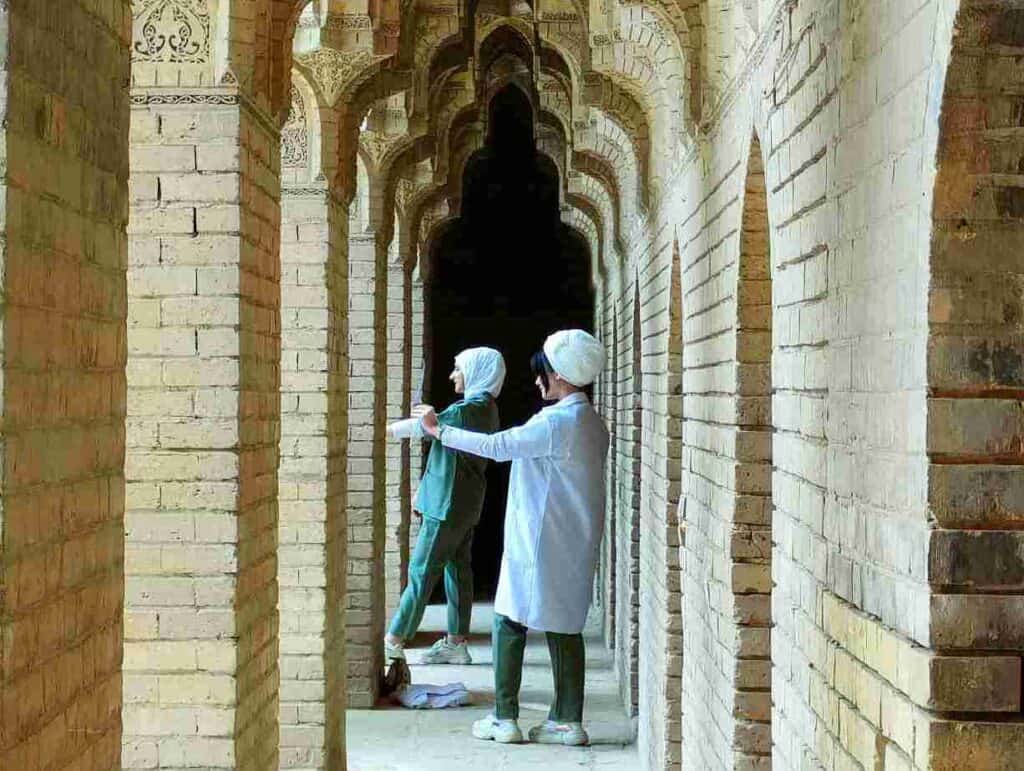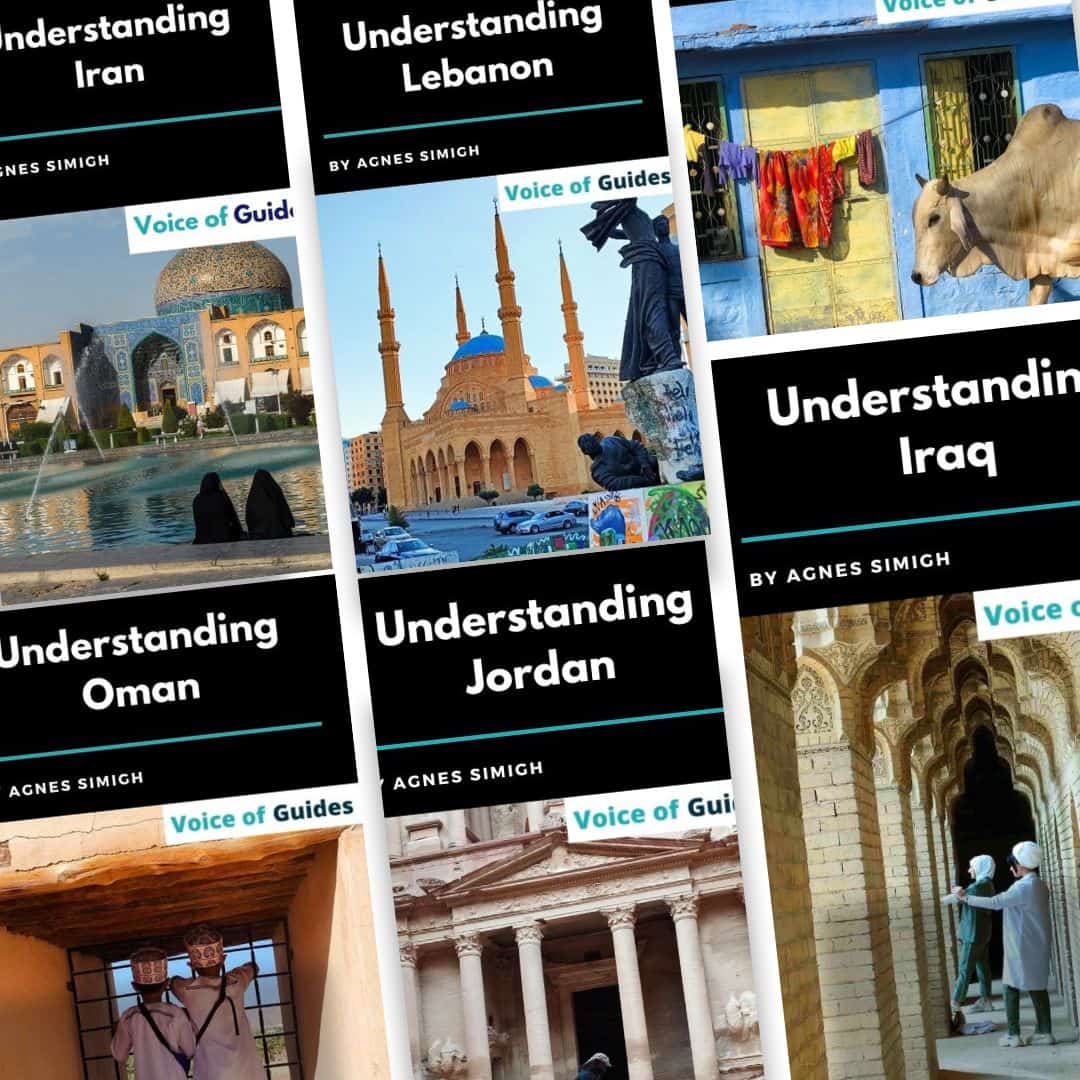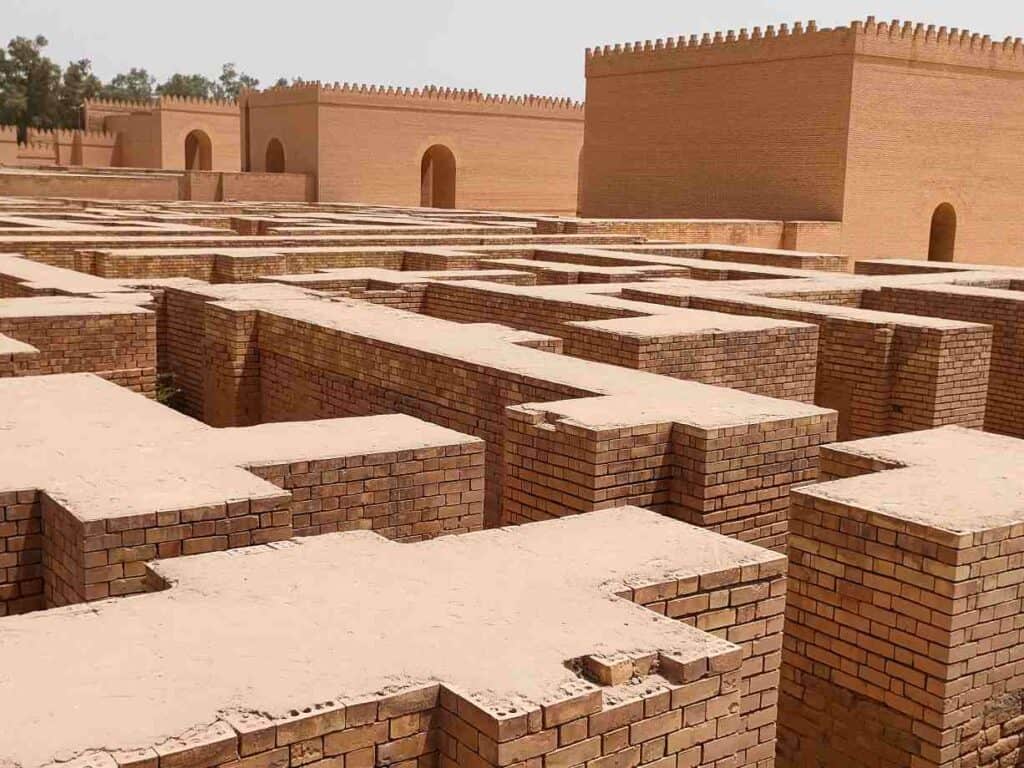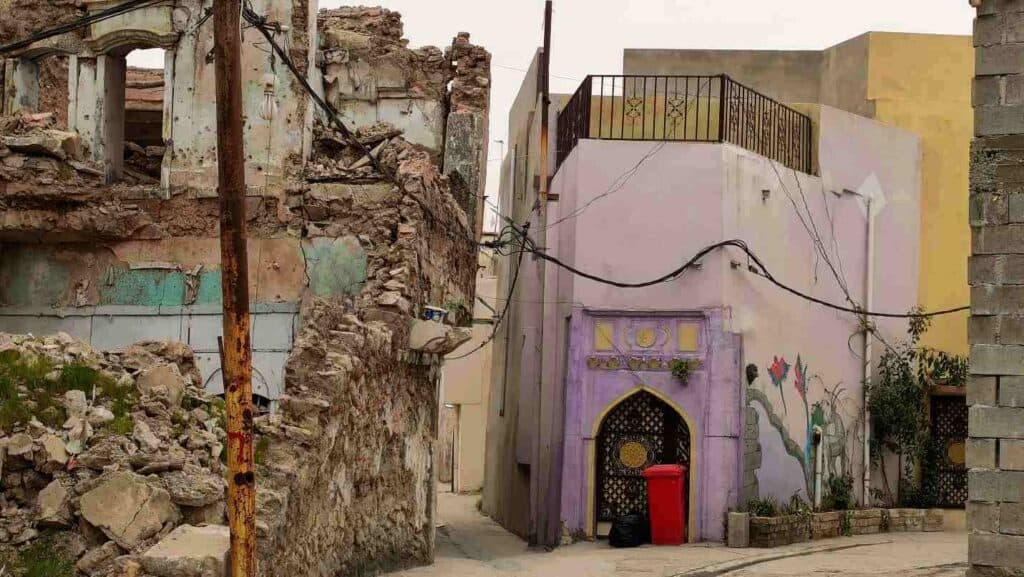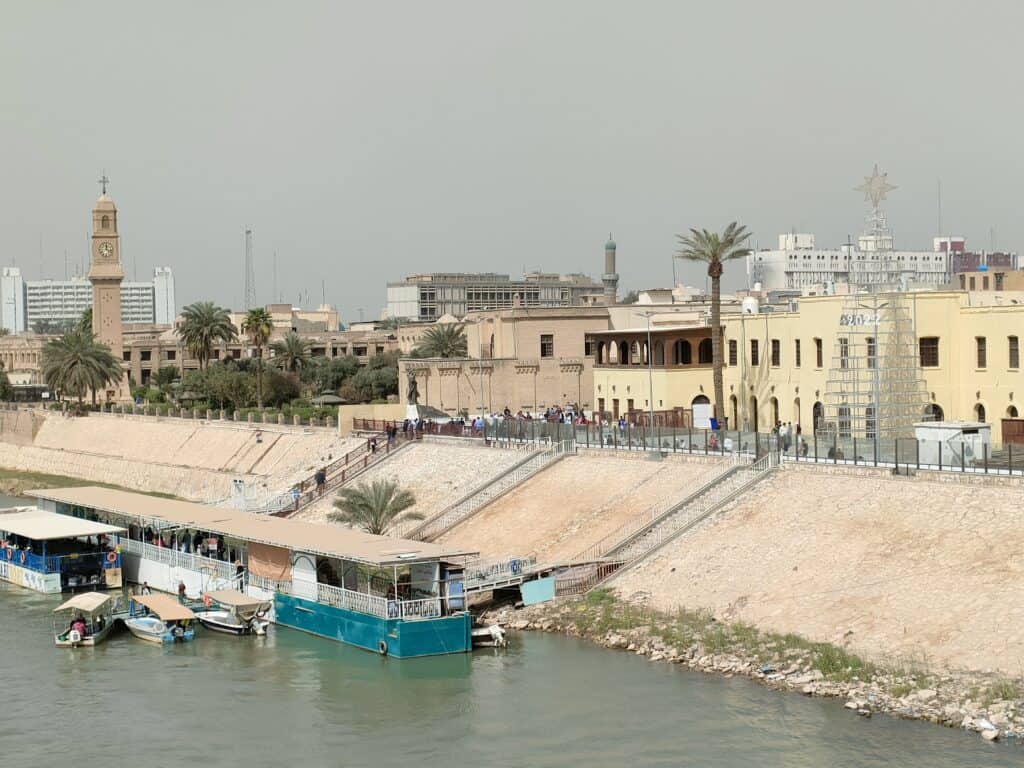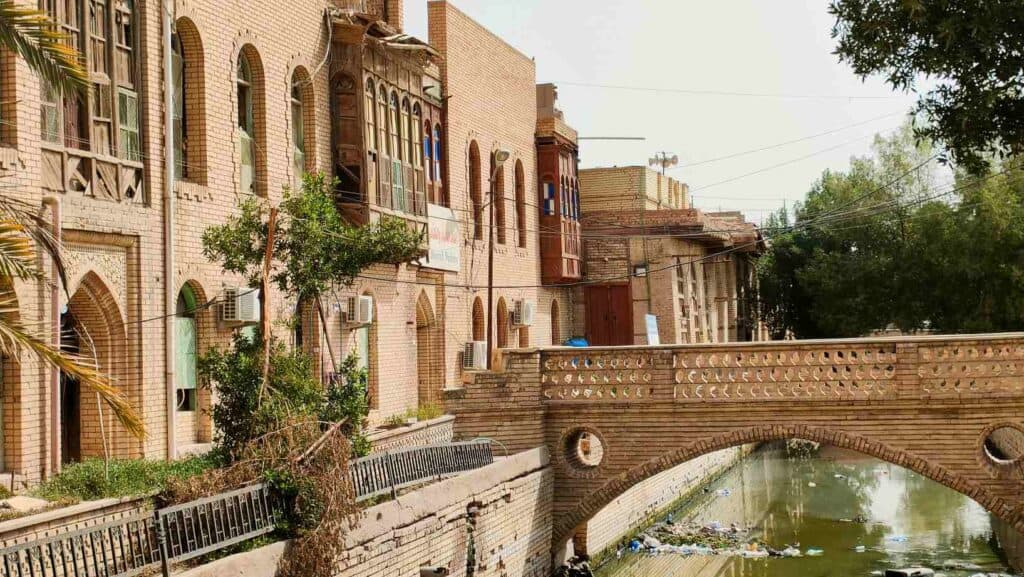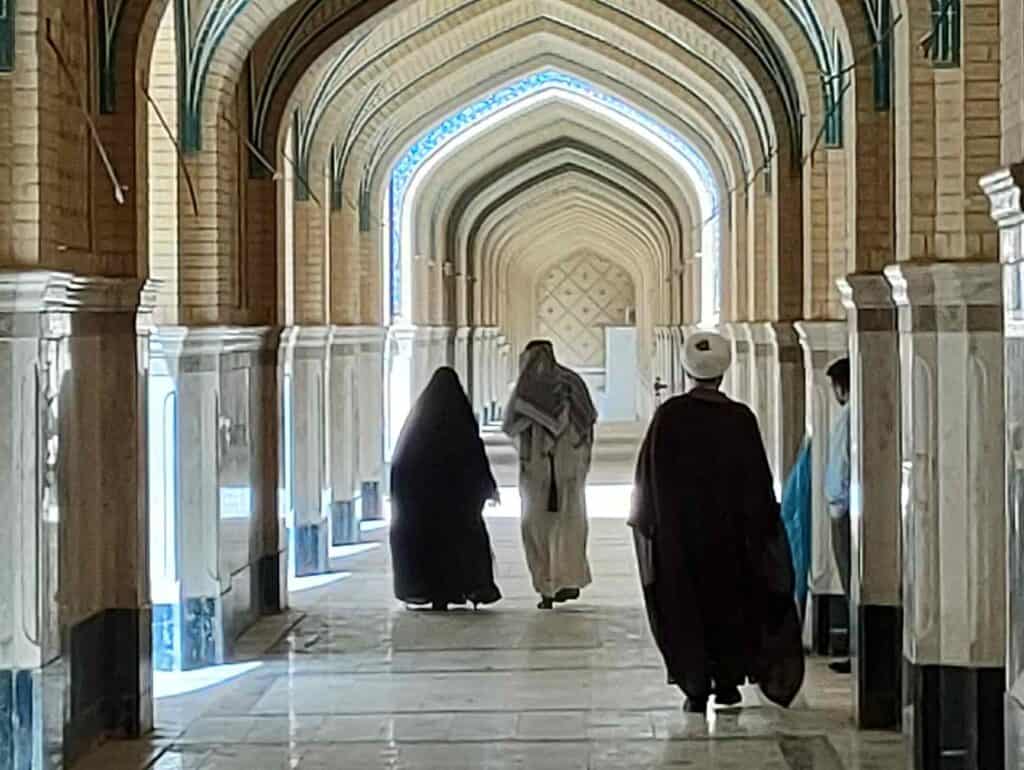This article may contain affiliate / compensated links. For full information, please see our disclaimer here.
Iraq just opened for tourists and is still an undiscovered place. Iraqi Kurdistan has been deemed safe for longer, but federal Iraq’s tourism is still in its infancy. Iraq is probably not the first destination to think about as a place to travel to, even when the Middle East is already on your mind. However, the hospitality of the Iraqi people can make it one of your most rewarding trips, where you can still feel like a discoverer. Having traveled extensively in Iraq for over six weeks, I made this list of the best things to do in Iraq, the most interesting or beautiful places to visit, and recommended itineraries.
Independent travel is possible in Iraq, but there are some things you must know to avoid inconveniences. Therefore, before you continue reading, I recommend checking out my post about “All you need to know before traveling to Iraq (weather, safety, money, transport, insurance, how to get around, etc.).
THE BEST TRAVEL ITINERARIES TO IRAQ AND IRAQI KURDISTAN
The following Itineraries include the best and most interesting places to visit in Iraq and Iraqi Kurdistan. It means you can only complete it if you have an Iraqi visa, i.e., you arrive in Baghdad and not Erbil! (In Erbil, you get a visa that is only valid in Iraqi Kurdistan).
If you come during Nowruz in March, include Akre in your Iraqi Kurdistan travel itinerary. And if you come during the Yezidi New year in April, check the specific day of celebrations in Lalish.
The ideal Baghdad sightseeing depends on the hotel’s location, but opening hours are limited; most monuments close from 1 pm – 2 pm.
Read my article about all you need to know before traveling to Iraq.
10 days Iraq travel itinerary
Day 1, 2 Baghdad, Tak Qasra
Day 1: Tahrir Square, al-Rasheed Street, Old Al- Mustansiriya School, Abbasid Palace, Baghdad souk, drive through the green zone, walk through al-Mutanabbi street in the evening
Day 2: Iraq national museum, Martyr’s monument, Taq Qasra
2 nights in Baghdad
Day 3: Ziggurat of Ur, Najaf
Head from Baghdad to the ziggurat of Ur and then to Najaf, where you visit the Imam Ali shrine at night.
1 night in Najaf
Day 4: Najaf and Karbala
Visit Kufa and the Wadi Al-Salam cemetery in Najaf and drive to the shrine of Imam Hussein in Karbala.
1 night in Karbala
Day 5: Babylon/Hillah, Baghdad
Head back to Baghdad and visit Babylon and Saddam’s palace on the way
1 night in Baghdad
Day 6: Samarra (Malwiya minaret and Al-Askari mosque), Hatra
2 nights in Mosul
Day 8: Mosul, Mar Mattai monastery
Half-day in Mosul and visit the Mar Mattai monastery.
Day 9: Lalish, Amedi, Dore canyon
1 night in Erbil
Day 10: Erbil
Visit Erbil and take your flight back home.
2 weeks Iraq travel itinerary
Day 1, 2, 3: Baghdad
You will probably arrive at night in Baghdad. So head to the hotel to have a couple of hours of rest.
Visit the following places in 3 days:
Day 1: Tahrir square, al-Rasheed Street, Old Al- Mustansiriya School, Abbasid Palace, Baghdad souk, drive through the green zone, walk through al-Mutanabbi street in the evening
Day 2: Al Kadminiya mosque, Taq Qasra
Visit the Al Kadminiya mosque, and the rest of the day drive to Taq Kasra outside Baghdad (one of the biggest brick arches in the world)
Day 3: Firdos square, Abu Nawas boulevard photo stop at the statue of Scheherazade, Mausoleum of Abdul-Qadir Gilani, Martyr’s monument, Iraqi museum, Save the Iraqi Culture monument, boat trip on the Tigris River
4 nights in Baghdad
Day 4: Babylon/Hillah, Karbala
Visit the Babylon site, Saddam’s former palace, and continue to Karbala. In Karbala, visit the shrine of Imam Hussein in lights in the evening.
1 night in Kerbala
Day 5: Karbala, Ukhaidir fortress, Najaf
Visit the shrine of Imam Hussein in the morning, then drive to the Ukhaidir fortress (50km) and, after that, to Najaf, the shrine of Imam Ali. Visit the shrine at night with lights.
1 night in Najaf
Day 6: Najaf, Kufa, Nasiriyah
Visit the shrine of Imam Ali also in the morning, walk in the nearby bazaar, and enter the biggest cemetery in the world (Wadi Al-Salam). Only 15 minutes from Najaf is Kufa, another Shiite holy place with the shrines of Shiite Imams and the house of Ali. Drive to Nasiriyah.
1 night in Nasiriyah
Day 7: Ur, Mesopotamian Marshes
Visit the ziggurat of Ur, and have a boat trip at the Iraqi Marshes, then drive back to Baghdad (3 and a half hours)
1 night in Baghdad
Day 8: Samarra (Malwiya minaret and Al-Askari mosque)
Visit one of the landmarks of Iraq, the Malwiya minaret and Al-Askari mosque, one of the most important Shiite holy sites in the world. Then continue to Mosul, and on the way, visit the ruins of Hatra.
3 nights in Mosul
Day 9: Mosul
Day 10: Mar Mattai and Rabban Hormizd monasteries, Lalish
Day 11: Amedi, Deralok dam, Dore canyon
Leave Iraq and go to Iraqi Kurdistan.
3 nights in Erbil
Day 12: Sulaymaniyah, Halabja
Leave Mosul for Sulaymaniyah, one of the important cities of Iraqi Kurdistan, the Halabja memorial, and drive to Erbil.
Day 13: Rawanduz and Soran
Drive to the most spectacular scenery of Iraqi Kurdistan with Rawanduz canyon, Soran, and waterfalls (Geli Ali Beg and Bekhal) with photo stops.
Day 14: Erbil
visit Erbil and take flight at night
Insurance: Safetywing is a cheap travel and medical insurance that also covers COVID-related issues in most countries, including Iraq.
Flights: Use Google Flights or Skyscanner to book your flight to get the best flight offers.
3 weeks Iraq travel itinerary
Day 1, 2, 3, 4: Baghdad
You will probably arrive at night in Baghdad. So head to the hotel to have a couple of hours’ rest.
Visit the following places in 4 days:
Day 1: Tahrir square, al-Rasheed Street, Old Al- Mustansiriya School, Abbasid Palace, Baghdad souk, drive through the green zone, walk through al-Mutanabbi street in the evening
Day 2: Al Kadminiya mosque, Taq Qasra
Visit the Al Kadminiya mosque, and the rest of the day drive to Taq Kasra outside Baghdad (one of the biggest brick arches in the world)
Day 3: Firdos square, Abu Nawas boulevard photo stop at the statue of Scheherazade, Mausoleum of Abdul-Qadir Gilani, Martyr’s monument, Iraqi museum, Save the Iraqi Culture monument, boat trip on the Tigris River
Important: The ideal Baghdad sightseeing depends on the location of the hotel, but opening hours are limited, most monuments close at 1 pm – 2 pm, so you have to be flexible as your plans can change.
Day 4: Umm al Qura mosque, Amiriya shelter, Christian churches, hang out in Karrada.
5 nights in Baghdad
Day 5: Babylon/Hillah, Al-Kifl
Visit the site of Babylon and Saddam’s former palace and al-Kifl, the tomb of Prophet Ezekiel.
1 night in Hillah
Day 6: Karbala, Ukhaidir fortress
Drive from Hillah to Karbala and visit the shrine of Imam Hussein in the morning, then drive to the Ukhaidir fortress (50km). Visit the shrine at night with lights as well.
1 night in Karbala
Day 7: Najaf, Kufa, Nasiriyah
Head to Najaf with the biggest cemetery in the world (Wadi Al-Salam) and the shrine of Imam Ali. Only 15 minutes from Najaf is Kufa, another Shiite holy place with the shrines of Shiite Imams and the house of Ali.
1 night in Najaf
Day 8: Ur, Uruk, Mesopotamian Marshes
Visit the archeological site of Uruk and the ziggurat of Ur and drive to sleep in Chibayish (Nasiriyah), the center of the Marshes.
Go to the Iraqi Marshes and have a boat trip, and drive back to Baghdad (3 and a half hours)
1 night in Chibayish in a traditional mudhif or proper hotels are available in Nasiriyah
Day 9: Mesopotamian Marshes, Qurna, Basra
Have a boat trip in the Iraqi Marshes and continue to Qurnah, the place of the Biblical Eden and where the Euphrates and Tigris rivers join. Continue to the southernmost port city, Basra.
2 nights in Basra
Day 10: Basra
Day 11: Drive back to Baghdad and Nippur
Drive back to Baghdad and visit Nippur archeological site on the way.
2 nights in Baghdad
Day 12: Agargouf ziggurat, Fallujah, Ramadi
Day 13: Samarra (Malwiya minaret and Al-Askari mosque), Tikrit
Visit one of the landmarks of Iraq, the Malwiya minaret and Al-Askari mosque, one of the most important Shiite holy sites in the world. Then continue to Mosul, and on the way, visit Tikrit with the memorial of the Speicher massacre and the former palaces of Saddam.
3 nights in Mosul
Day 14: Mosul
Day 15: Hatra and Mar Mattai monastery
Day 16: Amedi, Delaruk dam, Dore canyon (Barzan)
Leave Federal Iraq and continue to Iraqi Kurdistan.
2 nights in Erbil
Day 17: Rawanduz, Soran, Gali Ali Beg and Bekhal waterfalls
Day 18: Sulaymaniyah, Halabja
1 night in Sulaymaniyah
Day 19: Erbil
Visit Erbil
2 nights in Erbil
Day 20: Lalish and Rabban Hormizd monastery
Day 21: Erbil
Fly back home
THE BEST THINGS TO DO IN FEDERAL IRAQ
1. Baghdad
Baghdad, the capital, is one of the highlights of your visit to Iraq. Few cities have an atmosphere that conserved the past in a way as Baghdad did. Worn-down colonial buildings, war memorials, the Tigris riverbank, and a range of trendy restaurants and traditional cafes make it probably the most interesting place in Iraq. You need at least three days (if planned carefully) to discover the capital’s main tourist attractions and taste some Iraqi specialties like kebab or Mazgouf (fish).
Read this ultimate guide about the best places to visit in Baghdad in 3-4 days
Insurance: Safetywing is a cheap travel and medical insurance that also covers COVID-related issues in most countries, including Iraq.
Flights: Use Google Flights or Skyscanner to book your flight to get the best flight offers.
2. Agargouf – ziggurat
The most famous ziggurat in Iraq is the one in Ur. It is also in the best state after renovations. However, only half an hour’s drive from Baghdad, you can get to the remains of another one that was part of the former capital of the Kassite Empire, dating back to the 2nd millennium BC. A Kassite king of Babylon, Kurigalzu I, built the zikkurat of Agargouf dedicated to the principal Babylonian God, Enlil, who had power over wind, air, earth, and storm. Kassites controlled Babylonia after the fall of the Old Babylonian Empire for 400 years.
Zikkurats were sacred places in the center of ancient Mesopotamian cities built in terraced structures from mud bricks. On top of them stood the temple dedicated to the chief god that only priests could enter. The people of the land of two rivers (Tigris and Euphrates) were pious and prayed to the gods for good harvest, fortune and wealth. Chogha Zanbil is the best-preserved ziggurat and one of the few located outside Mesopotamia, in today’s Iran.
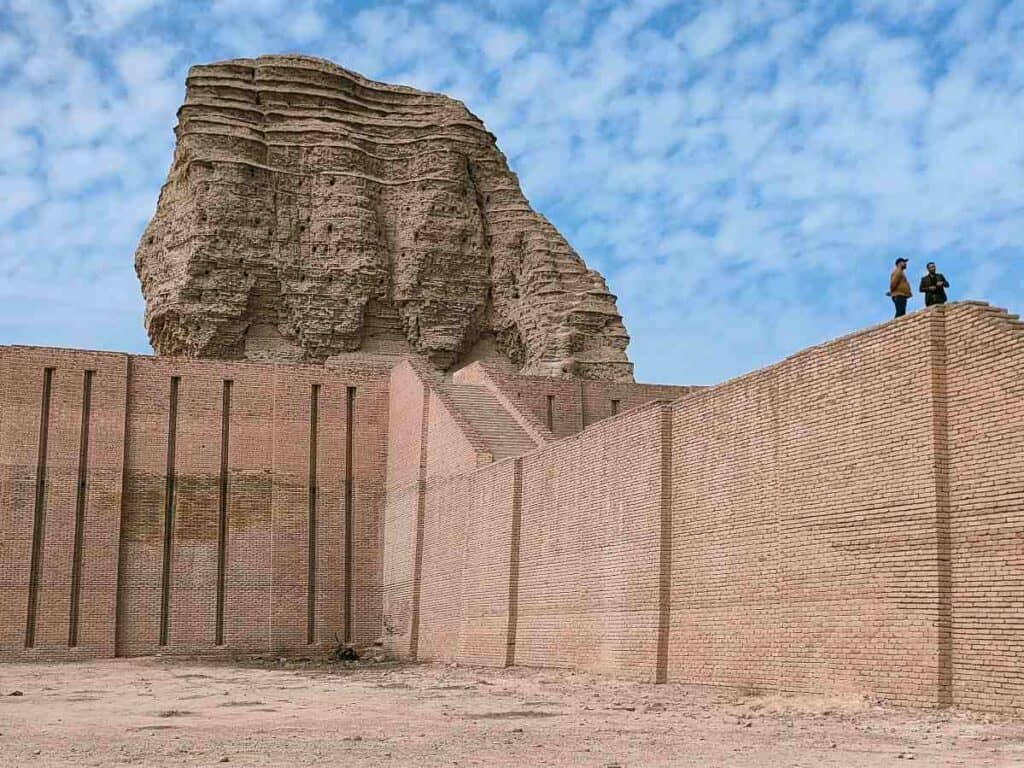
The historic site was damaged during the US invasion in 2003. Not much was left from the administrative buildings, the restaurant, and the museum that once welcomed visitors. There have been plans to restore the monument, but not much happened, and it is a less visited attraction in Iraq now.
Entrance fee: 25 000 IQD (~17 EUR) like most tourist attractions in Iraq.
3. Fallujah and Ramadi – interesting places to visit in Iraq
Fallujah and Ramadi had been popular touristic destinations in Iraq. However, they made headlines in 2014 when ISIS seized a large part of Anbar, including Fallujah and Ramadi, causing enormous destruction. So why go there?
A traveler should not always visit a place because it is “picturesque” but to get knowledge and a better understanding and hear the stories of local people. Traveling to Fallujah and Ramadi is more of an educative visit to see the stage of reconstruction of two severely damaged cities during the ISIS rule.
Ramadi, the capital of Anbar Governorate, has a strategic location along the Euphrates. It is where the road to Syria and Jordan also cross each other. Ramadi has already largely been reconstructed after the destruction caused by the Islamic State and now shows an image of a modern city with a brand-new kilometers-long corniche, several modern houses, villas, and roads. This is a small town with fewer attractions, but do not miss visiting the mosque built during Saddam.
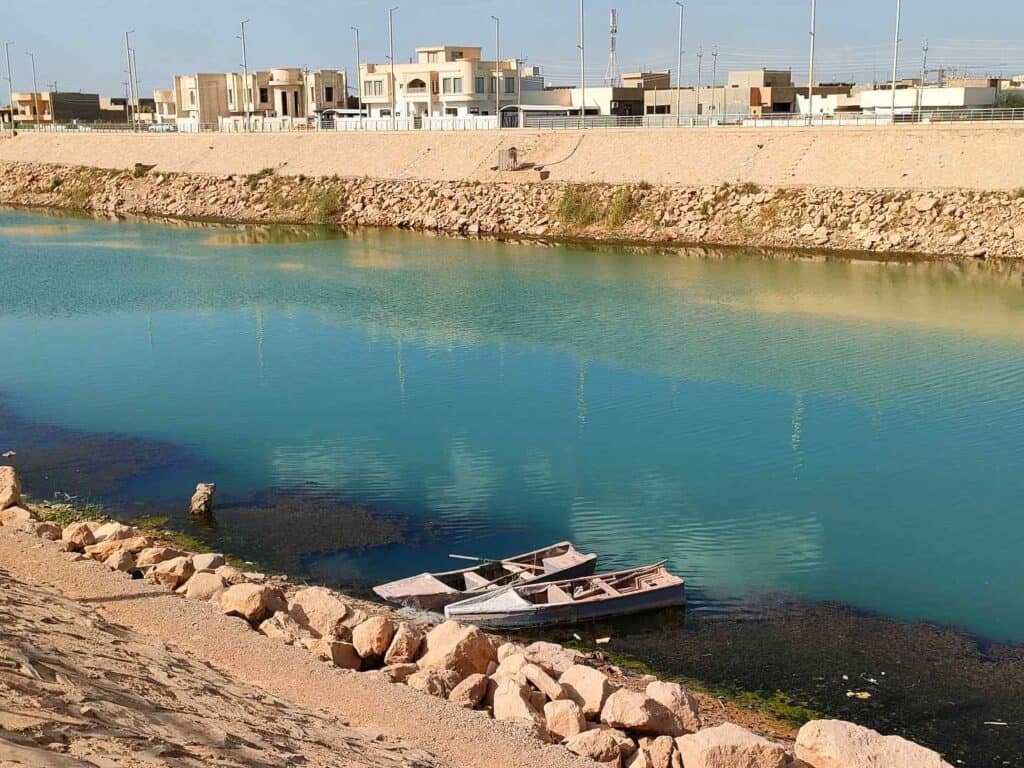
Fallujah is called the “city of mosques,” with more than 200 praying halls, an attractive riverside promenade, and the first shopping mall in Anbar province. Known since Babylonian times, Fallujah was taken by ISIS in January 2014 and liberated in June 2016. It was also a strong supporter of the Saddam regime, with many senior Baath party officials coming from the city.
Between Fallujah and Baghdad, you can spot the infamous Abu Ghraib prison of Saddam along the highway.
The corniche (riverside promenade) is the most enjoyable part of Fallujah, with benches and stalls to serve the families going out at night. It is still under tight military control, so you should always visit it with locals who can justify your identity in case of police control.
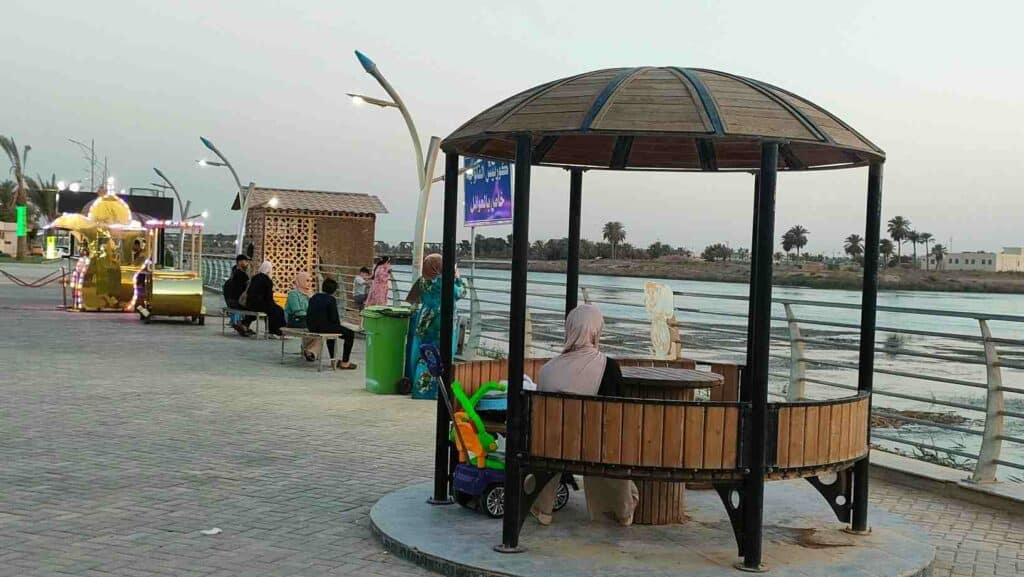
Close to the corniche in the old city is the oldest mosque of Fallujah, and in the outer district, you can visit the most impressive mosque in the town. The bazaar is still the favorite place for locals to go shopping. Fallujah opened a brand-new shopping mall a few months ago. It is the first in the Anbar Governorate, making it a kind of attraction.
How to get there?
Shared taxis/ vans depart from Al-Alawi North to the Anbar region. There is regular transport between Fallujah, Ramadi and Baghdad.
Where to sleep?
There is one hotel in Ramadi, and they plan to build a 5-star hotel, or you can stay with locals.
4. Hit
Like Fallujah and Ramadi, Hit is also in the western Anbar region. Despite not having extraordinary attractions, I loved this small town because of its location along the Euphrates River amid palm tree orchards, greenery, and the wooden water wheels once crucial for irrigation before the installation of electricity.
How to get there?
Public transport is rare after Fallujah further in the Anbar region. You can continue from Ramadi to Hit with a private car (expect to pay approximately 25 000 IQD for a 1-hour drive). If you start early morning from Baghdad, you can cover Fallujah, Ramadi and Hit in a day. However, spending the night in one of the cities is more relaxing.
Visit the ancient thousands of years-old parts of the city, its castle ruins, and the iconic water wheel. I had a boat ride on the Euphrates River, which is the most memorable way to enjoy this unique green landscape in the middle of an otherwise vast desert area.
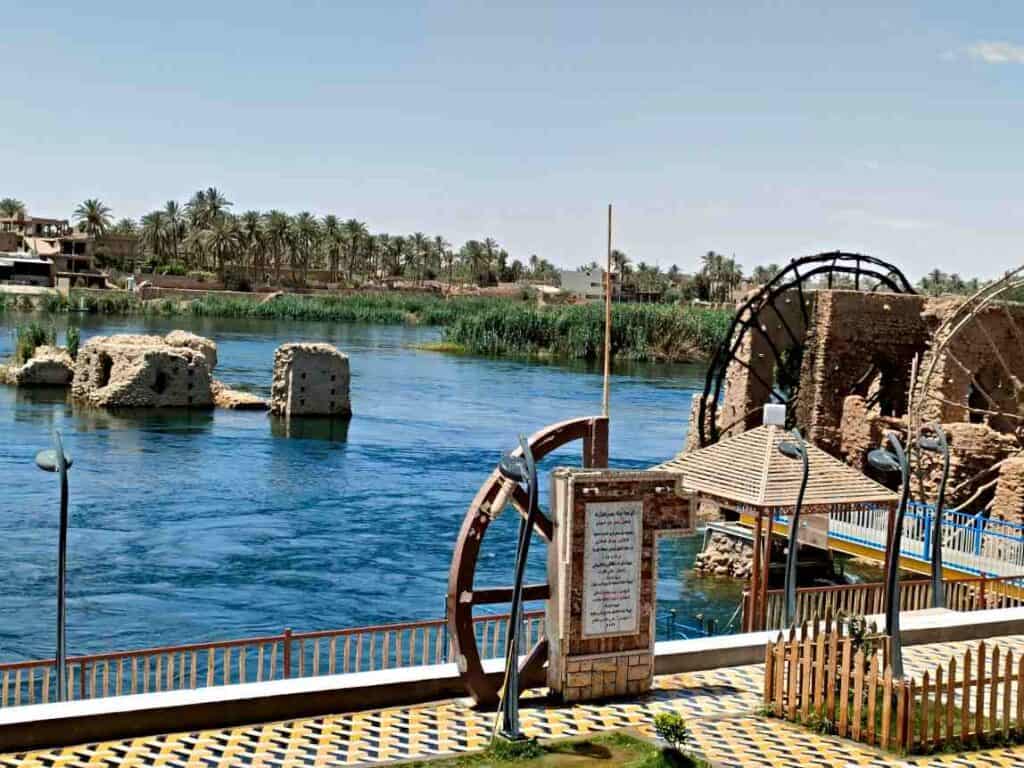
Safety
In general, visiting the principal cities of Anbar is safe. But only with locals. A foreign traveler raises suspicion when traveling alone. Little wonder after so many Europeans had joined the radical Islamic Caliphate, pushing the country into a disastrous state, and the country is still in a state of recovery.
Locals will also inform you about the current situation.
Let’s not forget that Anbar is still the least safe region until now in Iraq. There is a reason for the increased security control. Even though ISIS has largely been weakened in Iraq, it has not been completely eliminated, and military crackdowns against ISIS soldiers still happen. They retreated to the desert areas, for which Anbar and the region around Hatra are not without risk. You had better avoid visiting these places in the evening. Life seems normal, and I had a great time accompanied by locals, feeling completely safe. But I only spent two days there, and I would find it irresponsible to say you don’t need to be careful. Things can and do happen from one minute to the other!
Read this article about everything you must know before traveling to Iraq (safety, transport, checkpoints, weather, accommodation, insurance, etc.)
Insurance: Safetywing is a cheap travel and medical insurance that also covers COVID-related issues in most countries, including Iraq.
Flights: Use Google Flights or Skyscanner to book your flight to get the best flight offers.
5. Taq Kasra (Arch of Ctesiphon) – a must-see in Iraq
Ctesiphon is another wonder and beautiful place in Iraq that is not much known to the average foreign tourist.
It is the biggest arched vault (37 meters) made of brick that exists almost in its entirety. It was part of a palace called Ctesiphon in Mada’in, 40 km south of Baghdad. The exact date of construction is not known, but it dates somewhere between the 3-6th century. It is a Persian relic from the Sasanian era on the soil of Iraq. The Arabs defeated the Persians in this area, who used it as a mosque for a while. The Abbasid rulers used the bricks of the palace to build the famous Taj Palace in Baghdad.
When ISIS gained control of an increasing territory of Iraq in 2015 – 2016, Taq Kasra was in danger. The soldiers were only 60km away and already destroyed several monuments of cultural heritage in Iraq.
It is worth spending some time in Salman Pak, which is in contrast with the deserted surroundings of Baghdad with its greenery and bunch of palm trees.
How to get there?
You visit Taq Kasra on a day trip from Baghdad. Shared taxis depart from Al-Alawi southern bus station, and takes one hour to get there.
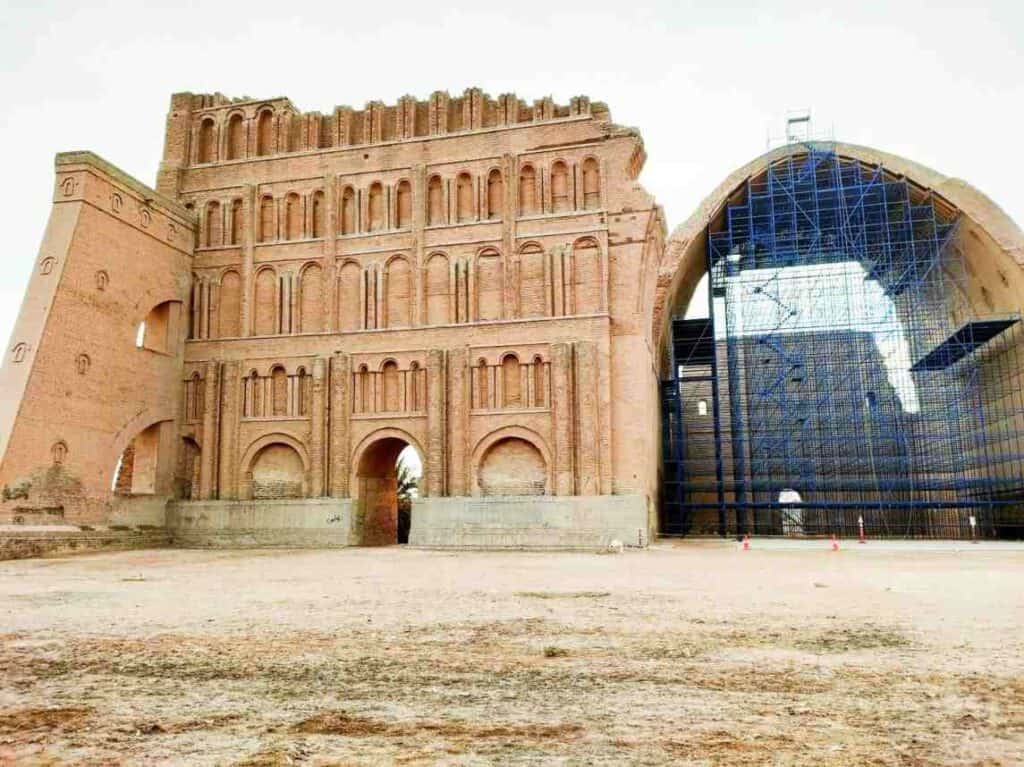
6. Gate of Sarabai school – a one-day day trip from Baghdad
Located near Kut, ancient Wasit was a true Islamic city abandoned in the 16th century when the Tigris River changed its course putting its survival in danger. The excavations of the 20th century revealed the remains of the school, a tomb, and a residential district. The gate of the Sharabai School is left relatively intact after over 1000 years. It has beautiful Islamic geometric patterned carvings, and from the size of the gate, you get an idea of how big the former madrasa could have been.
How to get there: Kut is around 2 hours from Baghdad and costs 15 000 IQD with a shared taxi. From Kut is another one-hour drive to the gate. Most people probably do not know where it is exactly. There are no indications of its location, but you need to leave the main road and head to the desert area at a certain point. Make sure that driver knows the way.
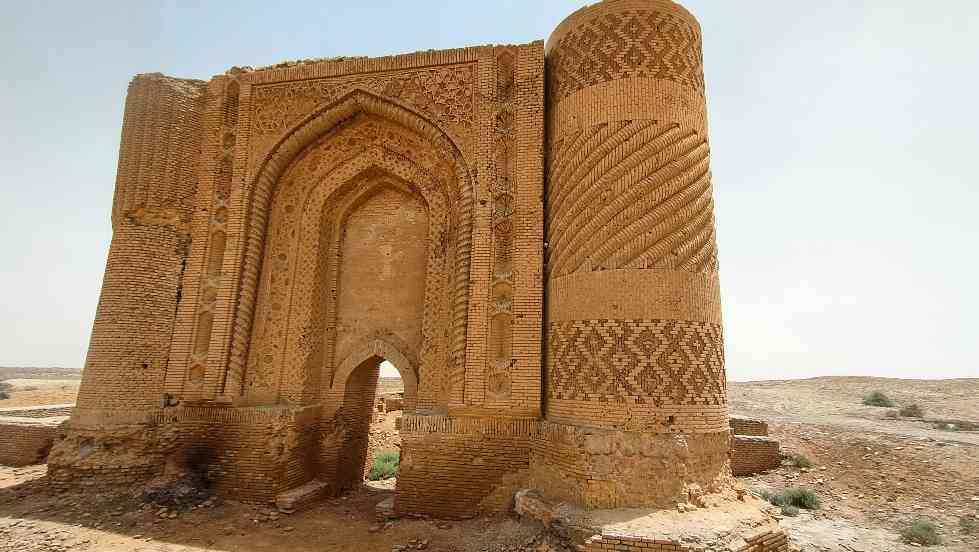
7. Nippur, the ancient Sumer religious capital
There are thousands of archeological sites in Iraq with countless treasures waiting to be excavated in ancient Mesopotamia. While Uruk enjoys a bigger reputation, Nippur remains an underrated site that only a few visitors include in their trip around Iraq despite Nippur being the religious capital of ancient Sumer Iraq.
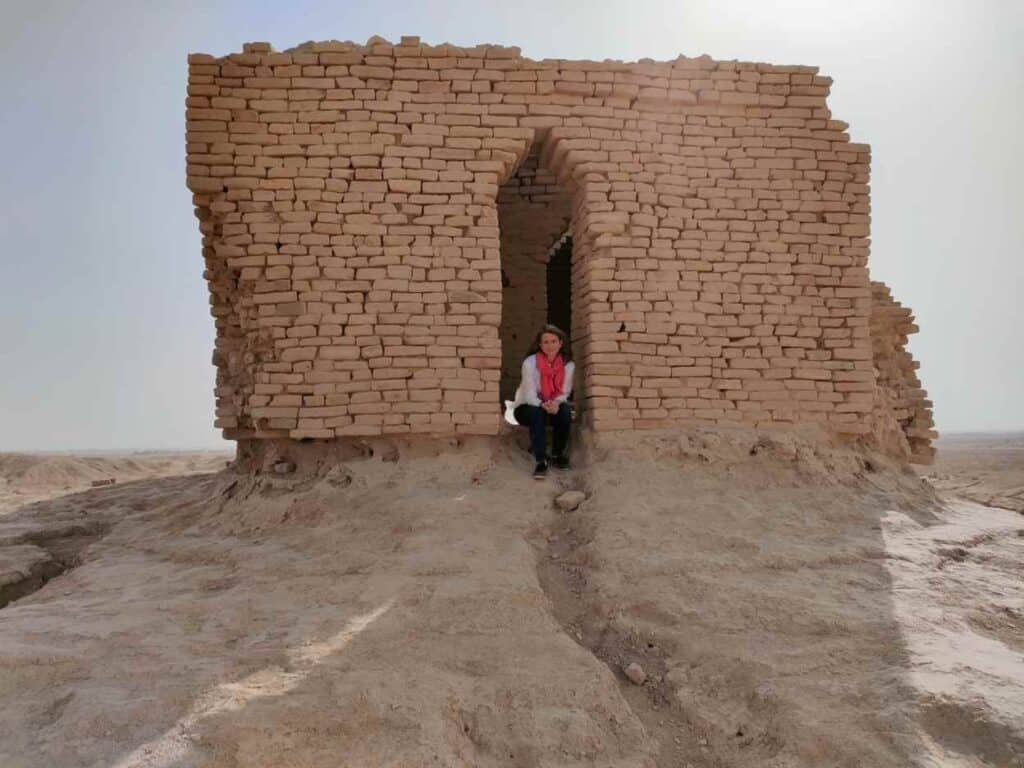
How to get there?
50 minutes’ drive from Diwaniyah
Important: You need a permit to enter the archeological site. You can contact Ahmed Salah, an archeologist who worked on the site and showed me around.
8. Karbala – one of the most important Shiite holy sites
Karbala is one of the holiest places for Shiite Muslims that attracts almost 20 million pilgrims every year during the month of Muharram, making it one of the largest human gatherings in the world. It was once the principal center of Shia scholarship.
This is where Imam Hussein, whom Shias consider their third Imam, died during the so-called “massacre of Karbala” in 680. Iranian and other Shia pilgrims flock to Karbala from all over the world. Many come on foot from as far as the Iranian border or march from Baghdad to Najaf and Karbala.
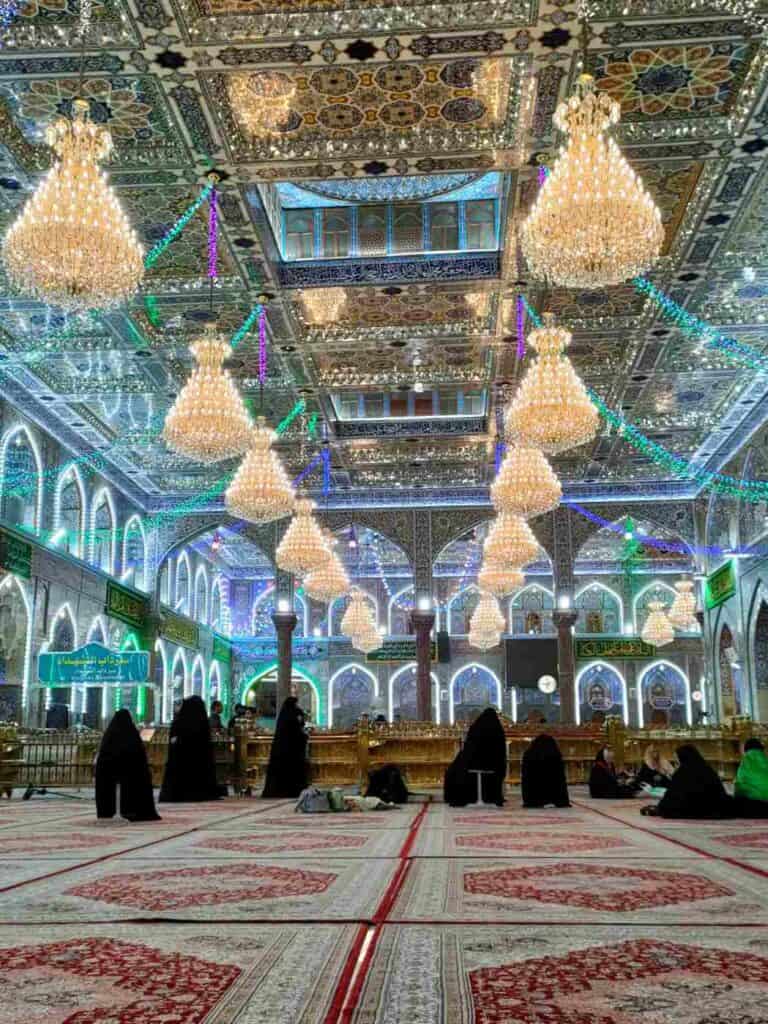
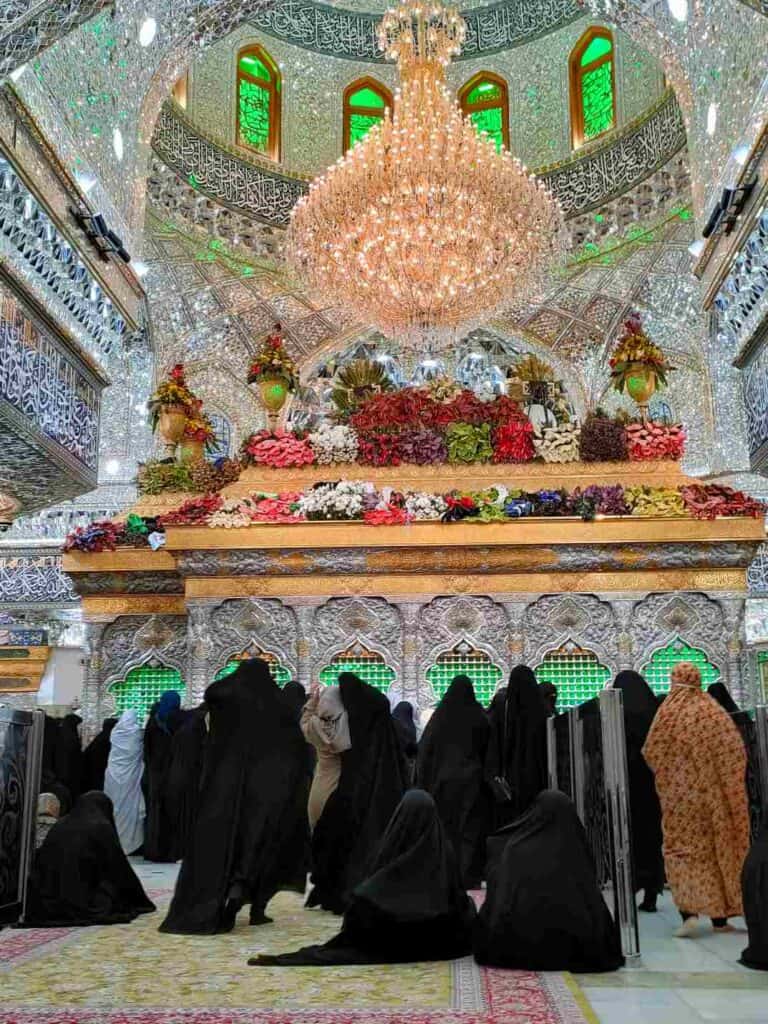
Hussain’s mausoleum was built on the spot where he died. Opposite the shrine of Imam Hussein, that of Abbas, Hussain’s half-brother, is also found there. The shrines have amazing interiors, diamond-like ceiling decoration, golden and jewel-encrusted doors, golden and silver calligraphy, and colored mosaics. All that was constructed from the donation of Iran and religious Shia individuals. Thanks to the offerings, Karbala has become one of the wealthiest cities in Iraq.
The shrine is surrounded by a large square, from which a maze of alleys opens up with religious and gift shops and restaurants. Karbala is a popular place for Shias to be buried close to Imam Hussain.
How to dress up in Karbala?
The area around the shrine is considered holy, and you have to pass through security control.
Women must wear abaya inside the sacred area and preferably outside as well as visiting places around Karbala to avoid the police’s attention at the security checkpoints. Although the security checks usually do not take too long, you should stay incognito not to waste the time of local co-travelers.
There is strictly no alcohol consumption in Karbala.
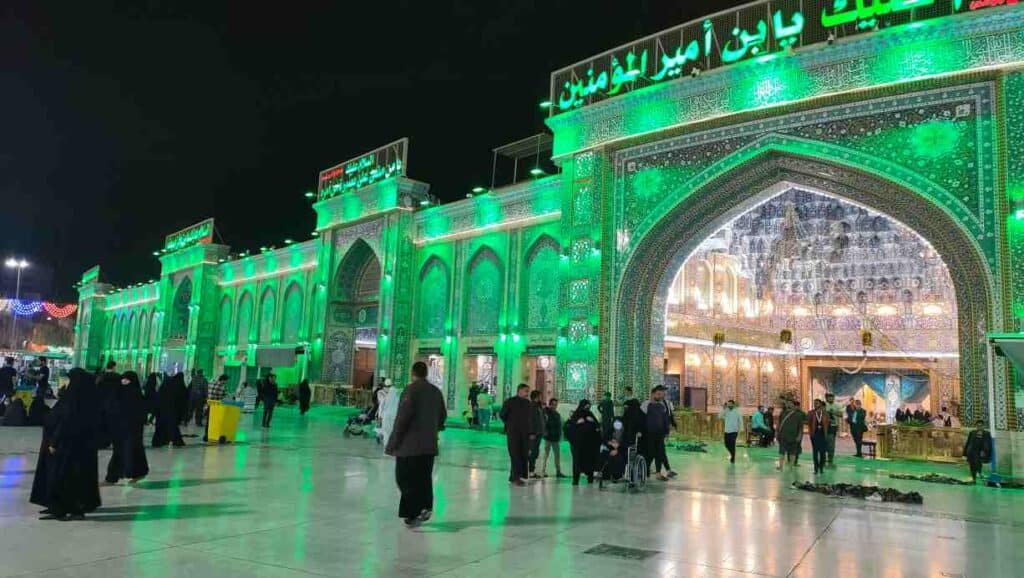
How to get there?
There are regular minibuses from Baghdad and Babylon.
Where to sleep?
There is a range of budget and more expensive hotels inside the sacred area or nearby.
9. Ukhaidir fortress, Al-Tar caves, al Qusayr, Imam Ali dropper Shrine ( قطارة الامام علي ع)
Ukhaidir fortress
Once in Karbala, do not forget to visit the Ukhaidir fortress, a great example of the Arab military architecture of 29 000m2 with 48 towers surrounding the wall. The fort stands in the desert near the main road. A big iwan in the central part is surrounded by reception halls for guests and ceremonies, and it also includes the living quarter of servants and guards. Despite excavations and investigations, there is no information about its exact date of construction. Some say it dates to the pre-Islamic period. Even those who say it was built after Islam do not agree on whether during the Umayyad or the Abbasid period.
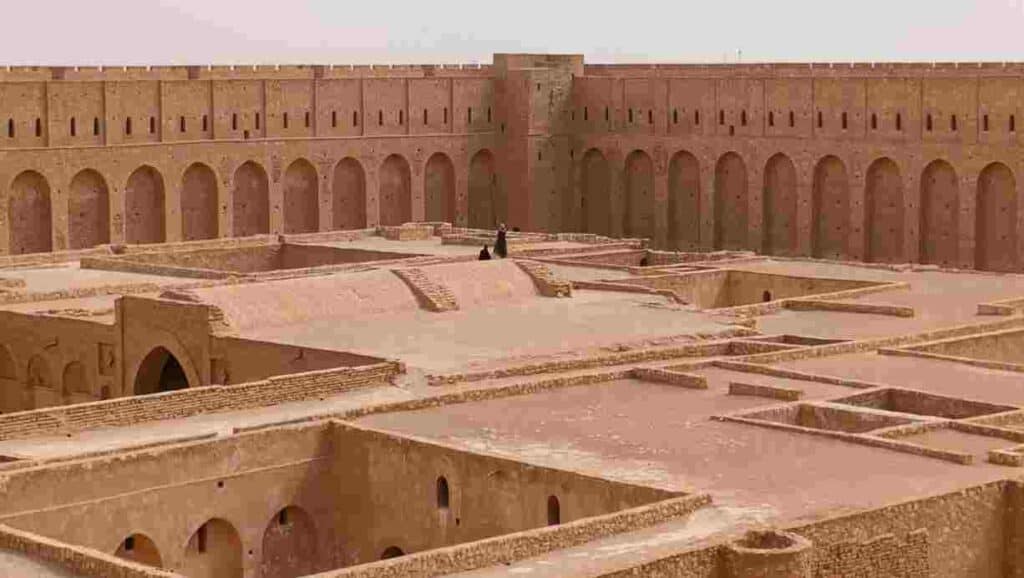
Al Qusayr is only 10 km from the fortress Ukhaider. It is one of the most important Christian centers from the pre-Islamic period. The church from the 2nd century that was part of a monastery is under excavation. The archeologists abandoned it when the insurgents threatened them.
On the way to the Ukhaidir fortress, you can stop along the highway and walk closer to the Al-Tar caves. The hundreds of man-made caves once stood along Lake Razazza, each having an entrance one and a half meters high and half a meter wide. They probably date back to the 2nd millennium BC. When Saddam blocked the waterways that fled the Arab marshes, the refuge of Shia rebels, the lake started to retreat. The caves are no longer along the lake but are seen from the main road.
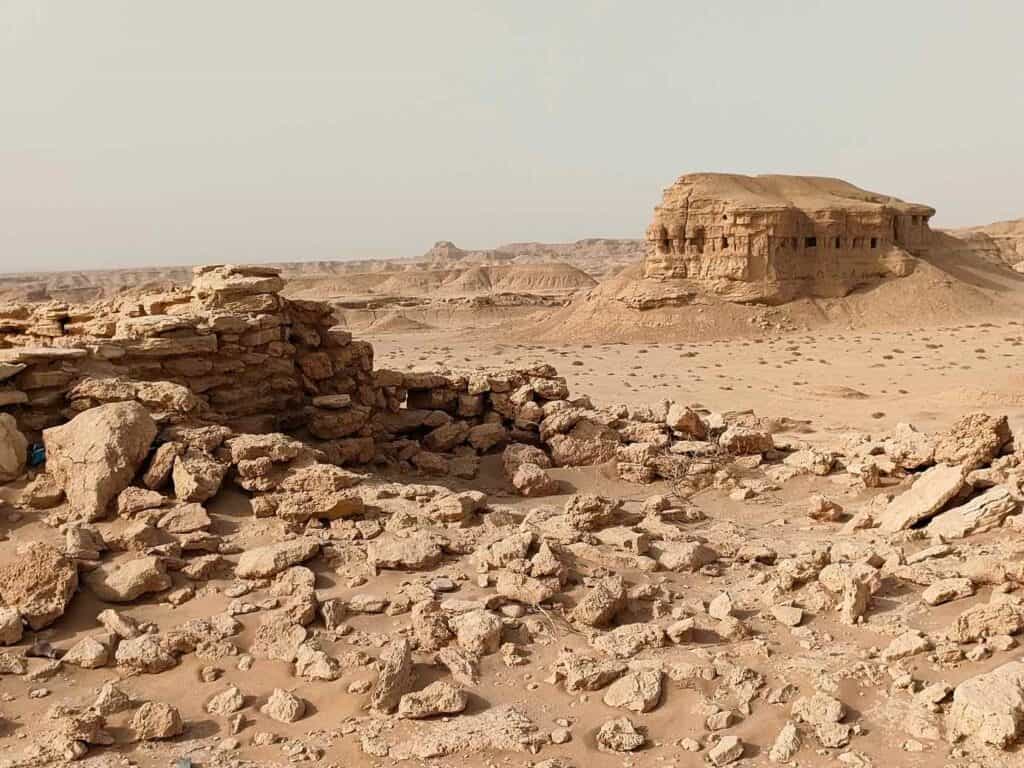
How to get there?
From Karbala, take a private taxi to the shrine. You can visit together with the Ukhaidir fortress. It costs approximately 40 000 IQD with the driver waiting for you.
Entrance fee to Ukhaidir fortress: 25 000 IQD
Imam Ali dropper Shrine ( قطارة الامام علي ع)
The sacred place of the Imam Ali dropper shrine in a deserted area is one attraction worth visiting around Karbala. The holy shrine is only 28 km from the city (reachable by taxi) and a short drive from the main road and commemorates one of the miracles of the first Shia Imam, Ali. Imam Ali slashed the rock with his hand and got water for his thirsty army, and the water has never stopped flowing since then.
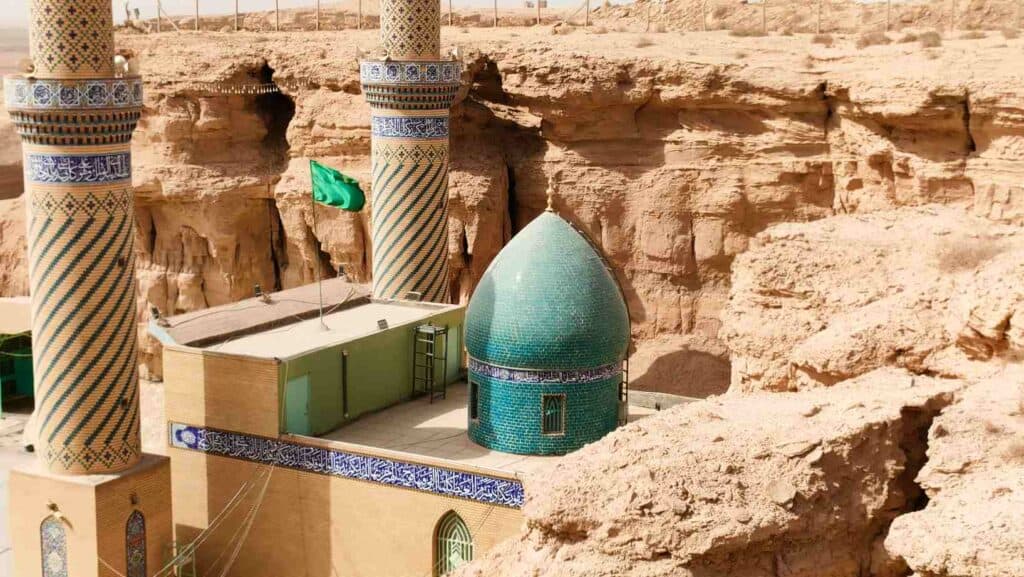
At the time of the Battle of Siffin in 657, Ali fought Muawiyah ibn Abi Sufyan, the governor of Syria, on the banks of Euphrates in Siffin. The battle ended with Muawiya finally calling for arbitration. This battle is part of what Islamic history called “first Fitna”, a major internal debate inside the Muslim community. It led to civil war and, finally, the schism between the Sunnis and Shias. A man was guarding the auspicious rock. His ancestors told him that whoever once would move the rock should join his religion. This is how he converted to Islam after the arrival of Ali.
There are rocks of diverse forms around, some forming a bridge that young visitors climb upon. The minarets of the shrine are barely visible from this point. But you can get the best view of the shrine if you climb up to the rocks and walk a few minutes on the top around the fence.
How to get there?
From Karbala, take a private taxi to the shrine. You can visit together with the Ukhaidir fortress. It costs approximately 40 000 IQD with the driver waiting for you.
Important: in the summer of 2022, a disastrous landslide occurred, and part of the rocky mountain broke off. They closed the shrine for visitors. Please ask about it when you are in Karbala if you plan to visit it.
To get a better understanding of ancient Mesopotamia and the turbulent history and culture of Iraq, read this constantly updated article about the best books about Iraq.
10. Imam Ali shrine in Najaf – one of the holiest places for Shia Muslims
In the center of Najaf stands the Holy Shrine of Imam Ali, the fourth caliph and son-in-law of the Prophet. Thanks to its glimmering golden dome with two minarets, each made of 40,000 gold tiles, inlaid in some places with blue enamel, it is seen from far. The whole area of 54 000m2 around the shrine is deemed sacred.
Similar to the shrine of Imam Hussain in Karbala, the evening is the best time to visit it when it is beautifully illuminated with lights.
Apart from that, Najaf is also one of the most important centers for Shiite cleric studies.
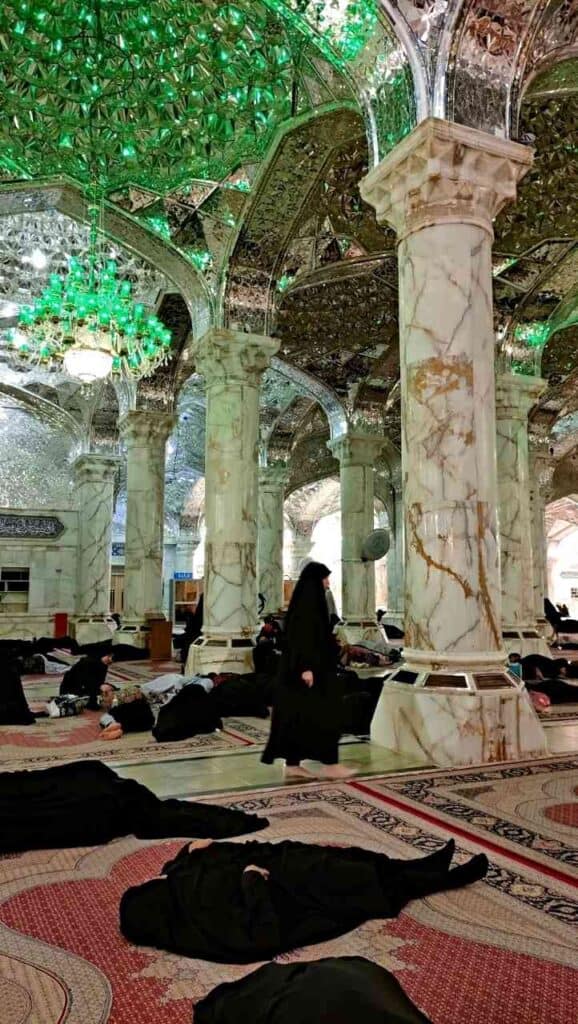
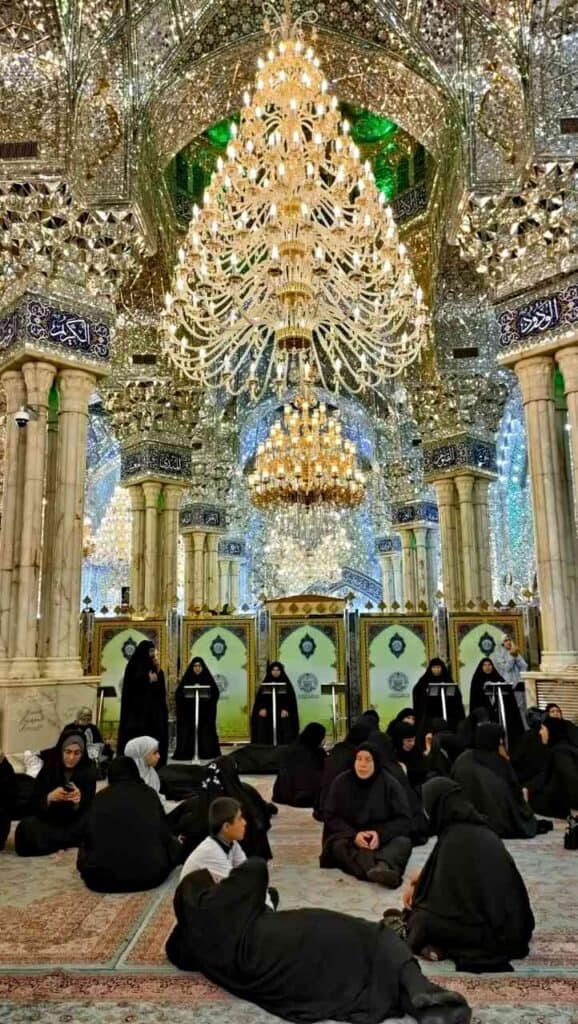
However, Najaf is not only about Imam Ali’s shrine. There are other attractions that are worth a visit, like the Al-Hannanah and Al-Sahlah mosques. The head of Imam Hussain is said to have been put in the middle of the mosque after his martyrdom in 61AH (AD680).
Shias believe it is the Al-Sahlah Mosque (also called al-Suhayl after its architect), where the 12th Imam (al -Mahdi) will reappear and the trumpet signaling the Day of Judgement will be blown.
The mosque has a long history dating back to the time of Imam Ali, whose followers settled in this neighborhood and prayed in this mosque. But some highly revered prophets also visited it.
Even as a non-Muslim visitor, I was impressed by the mosque’s size and striking interior decoration with the sky-blue ceiling, expansive carpet, intricately decorated mihrab, and outer brick arcades.
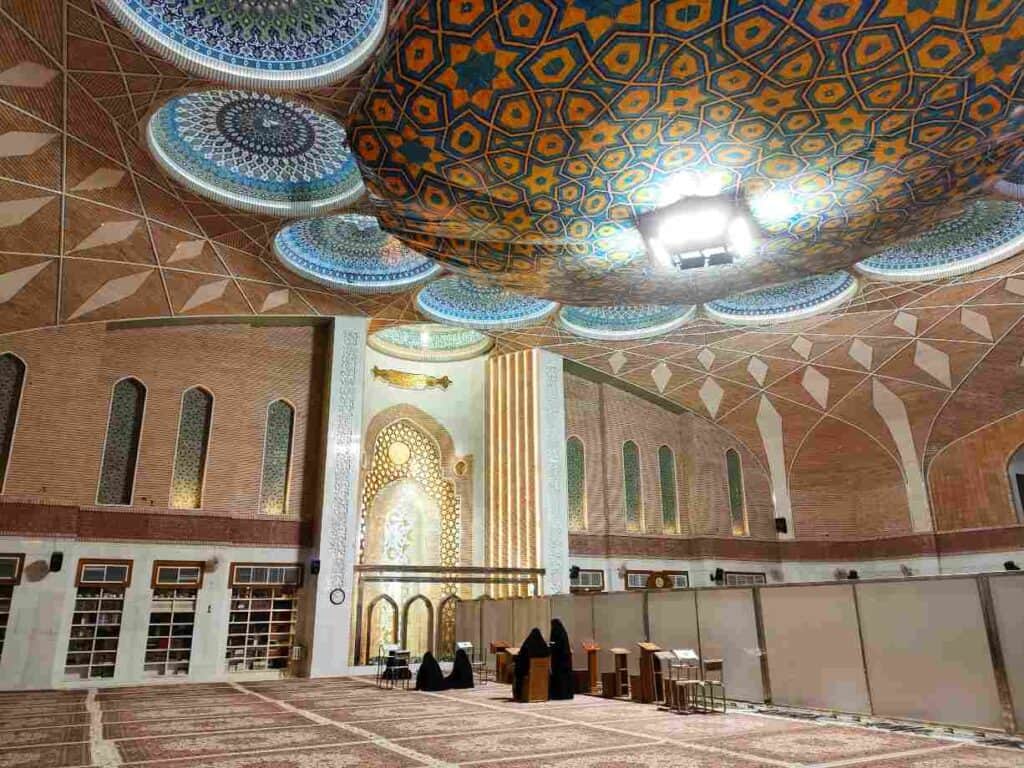
How to dress up in Najaf?
The same rules apply in Najaf as in Karbala. The area around the shrine is considered holy, and you must pass through security control. Women must wear an abaya from this point and preferably outside as well as visiting places around Najaf to avoid the police’s attention at the security checkpoints. Although the security checks usually do not take too long, you should stay incognito not to waste the time of local co-travelers. There is strictly no alcohol consumption in Najaf.
11. Wadi Al-Salam, the largest cemetery in the world in Najaf
The largest cemetery in the world, with millions of tombs, is the second most important place to visit in Najaf after Imam Ali’s holy shrine.
There are numerous entrances to the cemetery. I climbed to the top of the nearby multi-story parking lot to get a good view. Apart from the few marked wider paths, the tombs are crammed next to each other, making them hard to access, and forcing the family members to climb over other graves to get close. I walked inside, and I finally stayed there for over one hour. The massive number of young people buried here recall the cruel history of Iraq. Many soldiers and civilians died during the war with Iran, which was pointless pure bloodshed killing hundreds of thousands of people on each side. There are also victims of the civil war of 2006-2007, and of course, many religious Shias who want to be buried close to the shrine of Imam Ali, the son-in-law of Prophet Mohammed. So, coffins even get transported from Iran. The “tomb traffic” continues to be a significant source of income for Najaf. Since the 5th century, more than 9 million people have been buried here, including many prophets, kings, princes, and Sultans.
Most Iraqi and many Iranian Shiites have a relative buried in the cemetery.
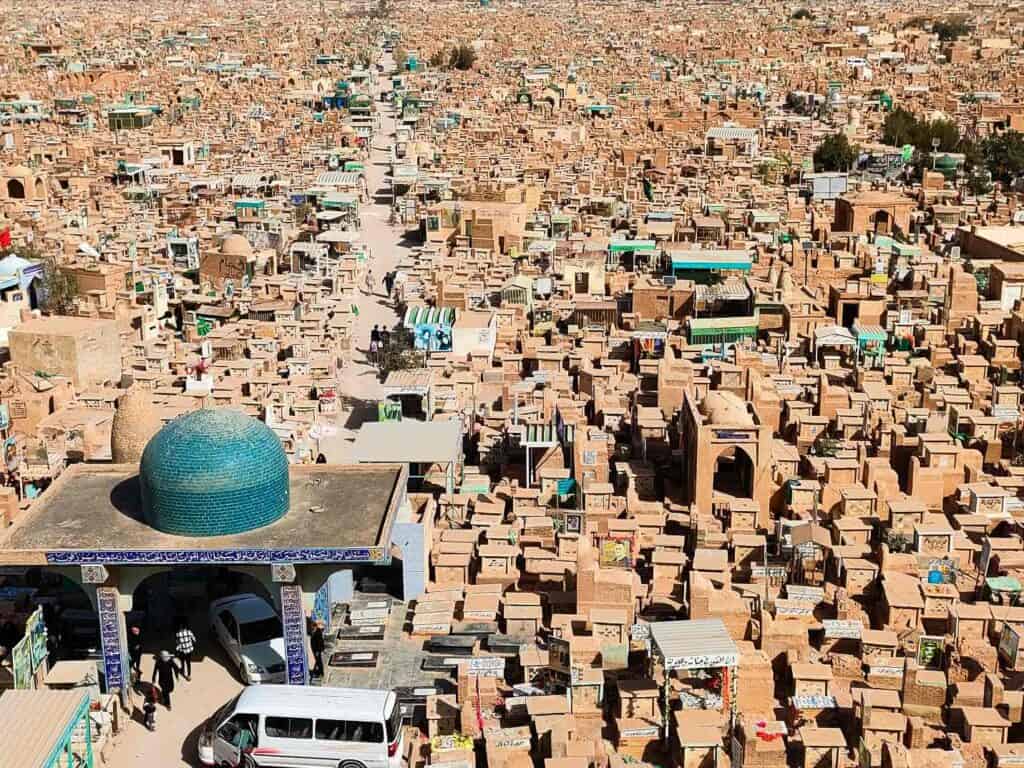
The largest cemetery in the world, with millions of tombs, is the second most important place to visit in Najaf after Imam Ali’s holy shrine. There are numerous entrances to the cemetery. I climbed to the top of the nearby multi-story parking lot to get a good view. Apart from the few marked wider paths, the tombs are crammed next to each other, making them hard to access, and forcing the family members to climb over other graves to get close. I walked inside, and I finally stayed there for over one hour. The massive number of young people buried here recall the cruel history of Iraq.
Many soldiers and civilians died during the war with Iran, which was pointless pure bloodshed killing hundreds of thousands of people on each side. There are also victims of the civil war of 2006-2007, and of course, many religious Shias who want to be buried close to the shrine of Imam Ali, the son-in-law of Prophet Mohammed. So, coffins even get transported from Iran. The “tomb traffic” continues to be a significant source of income for Najaf. Since the 5th century, more than 9 million people have been buried here, including many prophets, kings, princes, and Sultans.
Most Iraqi and many Iranian Shiites have a relative buried in the cemetery.
12. Kufa (10 km from Najaf)
Kufa, Basra and Wasit had been Iraq’s most important towns before Baghdad became the Abbasid Empire’s capital. The city developed into a primary cultural center where one of Sunni Islam’s four schools of religious laws (the Hanifa branch) was founded. When Imam Ali was elected the 4th Caliph, he moved the Islamic center from Medina to Kufa. Kufa had a long history, and many prophets lived here.
The highly revered Imam was assassinated here while praying in the mosque in 661. Today, it is home to the second-oldest mosque in Iraq (the Grand Mosque of Kufa), containing the tombs of many pious men of the religion, such as Muslim bin Aqeel and Hani bin Erwa.
It is believed that after Prophet Mohammad ascended to Heaven, he prayed in front of the Mosque of Al-Kufa, the House of Adam, and the Sanctuary of the Prophets.
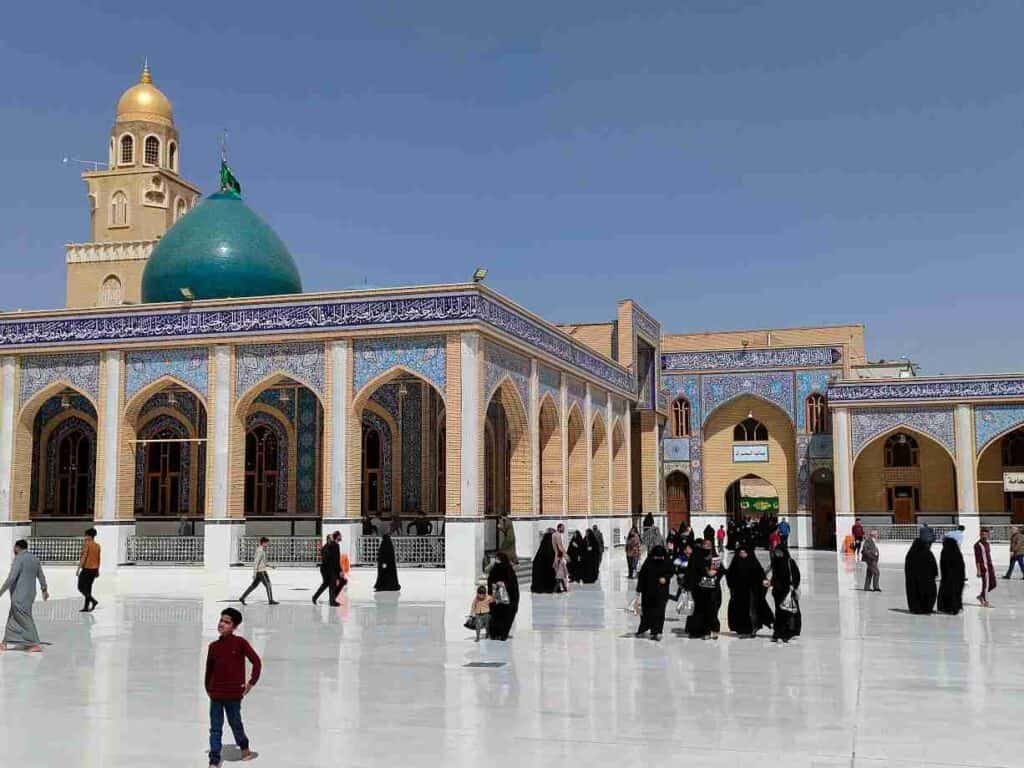
The House of the Caliphate (Dar Al-Imara) is said to be one of the world’s oldest Islamic monuments. Built in 637, it was formerly the secular administrative headquarters and palace for the whole of Iraq. Behind the House of the Caliphate lies the House of Imam Ali, which contains a well, a library, and items relating to the story of Imam Ali’s life and death, including the stone on which his body was laid out and washed before his funeral.
Some hundred meters from the Grand Mosque and Imam Ali’s House stands the Maytham al-Tammar shrine which has a splendid colorful mirror decoration. He was an early Islamic scholar, companion, and disciple of Ali ibn Abi Talib.
How to get there?
Kufa is only 10 km from Najaf that you can easily visit by taking a taxi from Najaf.
13. Uruk (Warka)
Uruk has long been known only to the professional world. Yet it is the largest and most thoroughly excavated settlement in Sumerian-Babylonian times to date: a city that has survived for 4,000 years.
The famous Gilgamesh poem originates in Ancient Sumeria and tells the story of Gilgamesh, a historical king of Uruk. It was originally written on 12 clay tablets in cuneiform script.
In Sumerian cities, palaces and churches were also built of adobe.
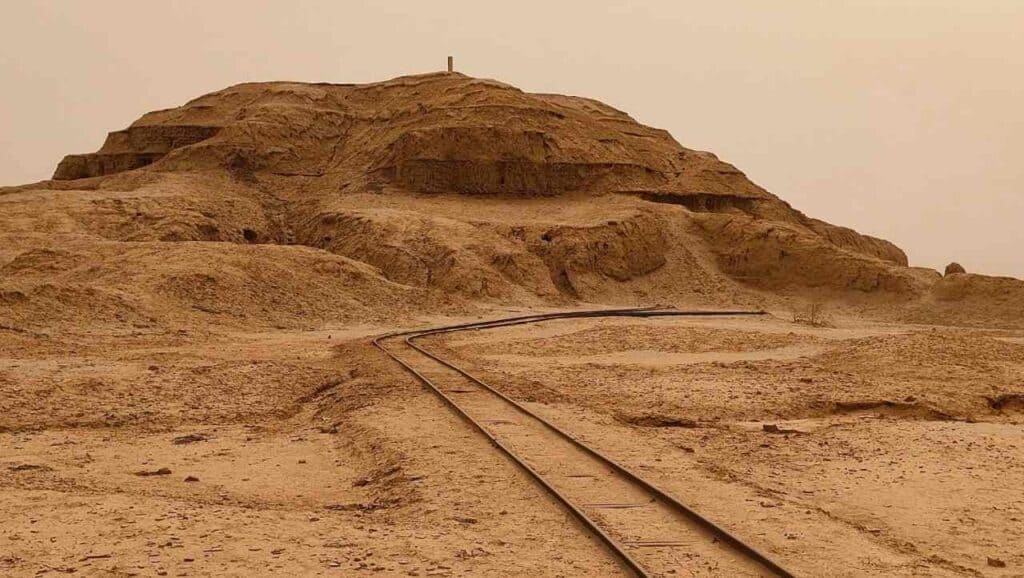
The architecture of Uruk was unique because such monumental temples were constructed for the first time. The Persian Achaemenids occupied it in 539, but they respected their tradition and left their temples intact. During the reign of the Seleucids, the city became under the Parthians’ rule, who built one palace and more temples. It is rarely mentioned during the Sassanid times and gets slowly depopulated.
During the Abbasid times, the Tigris River flooded the area and turned it into a swamp that only dried out in the 16th century.
German archeologists have been working on the excavations since the beginning of the last century and discovered 18 construction periods.
The first ruler of the 3rd Ur dynasty, Ur-Nammu, erected the zikkurat using the earlier terraces that are seen today. The entire city can be seen from the top of the 14-meter-high ziggurat. The archeologists unlayered 18 construction periods.
The ancient city was encircled by a 7-meter wide and 9-km long wall fortified with 900 towers. The Eanna, the sacred area of Goddess Innin, was Uruk’s most important cultic center, while they found traces of sacrificial fire in the Anu shrine. The rectangular courtyard, columned hall, palace, hammam, and a series of shrines were all part of the complex.
How to get there?
From Nasiriya it takes one and a half hour to go to Uruk or from Samawah it takes 45 minutes.
Important: you need a permission to enter the archeological site that you can get in Samawah city at the ticket office: no English nameمتحف السماوة
Insurance: Safetywing is a cheap travel and medical insurance that also covers COVID-related issues in most countries, including Iraq.
Flights: Use Google Flights or Skyscanner to book your flight to get the best flight offers.
14. The ziggurat of Ur
Ur is an ancient Sumer city mentioned as Abraham’s birthplace in the Torah or Old Testament. The main attraction of Ur is the ziggurat dedicated to the God of the moon Nanna (called in Sin for the Akkadians), hence the city’s name. Together with Chogha Zanbil, it is the best preserved in ancient Mesopotamia.
Ur once stood along the Persian Gulf and the river Euphrates which changed course since then and now stands in a deserted area. It was a major trade city where gold, silver, and semi-precious stones were transported from a long distance.
It was one of the first famous historical monuments in the world. Ur was captured by the Akkad rulers, which marked the start of the Akkad period (the blending of Sumer and Semitic cultures).
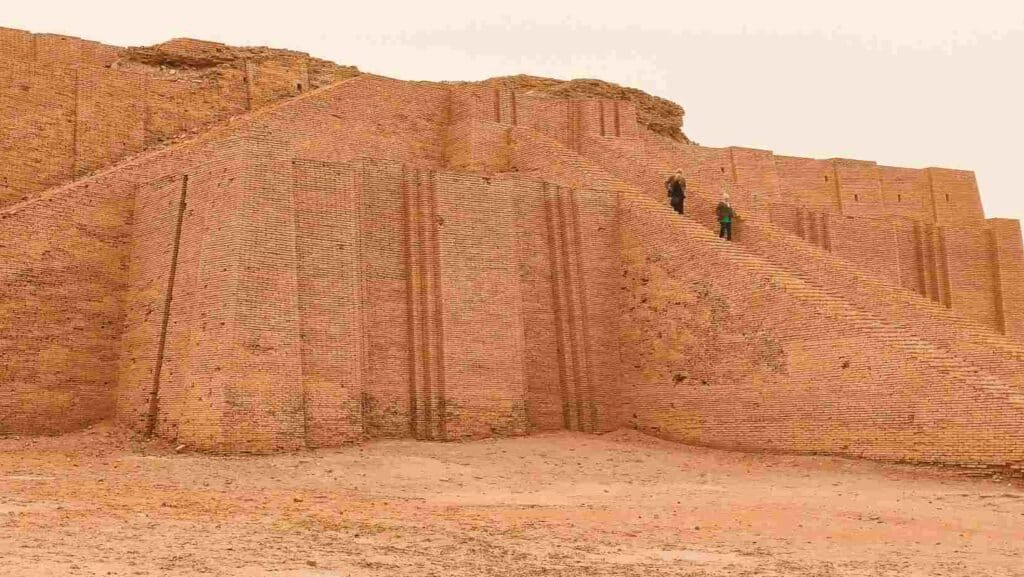
The first king of the 3rd Dynasty of Ur, Ur-Nammu (2113-2095 BC), revived the Akkad Empire after a brief, chaotic period following the fall of the Empire and made Ur a flourishing city of Mesopotamia. The King became known for writing the first book of law (Code of Ur-Nammu) that even preceded the Coda of Hammurabi by 300 years. He built the walls surrounding Ur and constructed the over 20-meter-high ziggurat with the shrine dedicated to Nanna. His son and successor, Shulgi, the greatest King of the 3rd dynasty of Ur, continued the construction of the ziggurat of Nanna. During his rule, Ur controlled much of Mesopotamia.
The story of Ur ended temporarily when the Elamites dethroned the last King of Ur at the end of the 3rd millennium BC. Ur was later rebuilt and incorporated into the Kingdom of Babylon. It served as a religious center and the capital for governors.
Excavations started in the 1930s, during which tens of thousands of cuneiforms were found in temples, palaces, and people’s houses, proving the complex legal system of the city-state.
Saddam Hussein ordered the renovation of the monumental staircase and lowest levels. Apart from the ziggurat, the royal palace and mausoleum of Ur-Nammu are also part of the archeological complex. The precious items found in the tombs were imported from other parts of Asia and indicated the significance of Ur.
The buildings of Ur were constructed from mudbrick, and mud was used as plaster.
King Nebuchadnezzar II of Babylon continued work on Ur, and the last Babylonian King, Nabonidus, increased the height of the ziggurat by 7 meters.
After the Persian conquest, Ur lost its former importance, and by the 4th century, it was almost completely forgotten.
How to go there? Ur is located 16 km from Nasiriya. The only way to get there is with private car
15. The Mesopotamian Marshes – one of the best things to do in Iraq
The Marshlands had been the cradle for human civilization 5,000 years before. In the Mesopotamian Marshes, the local Madan tribes also called the Marsh Arabs, constructed their houses out of reed. They descended from the Ur, Sumer, and Babylon civilizations and created a unique culture. The indigenous tribes raised water buffalo, planted rice, and fished when water was still abundant in fish.
Their attractive long house called mudhif has been used for communal gatherings and to welcome guests. It is the symbol of this geographically and culturally unique area. They stabilize the mudhif by bundling the reed into thick columns that span over like arches to make the building’s spine.
Inside the house, brocaded cushions are placed on two sides to sit on, and the tale-like Iraqi teapots are placed in the middle to offer tea or coffee to the guests.
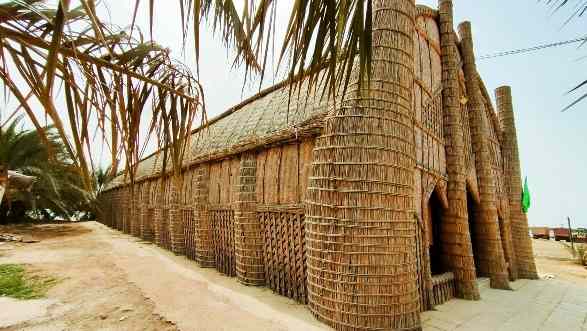
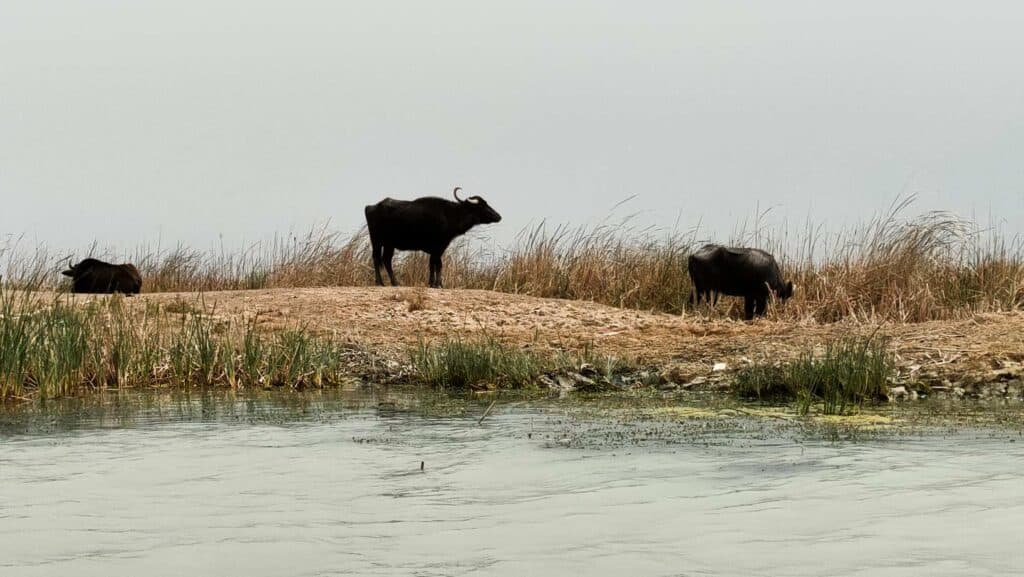
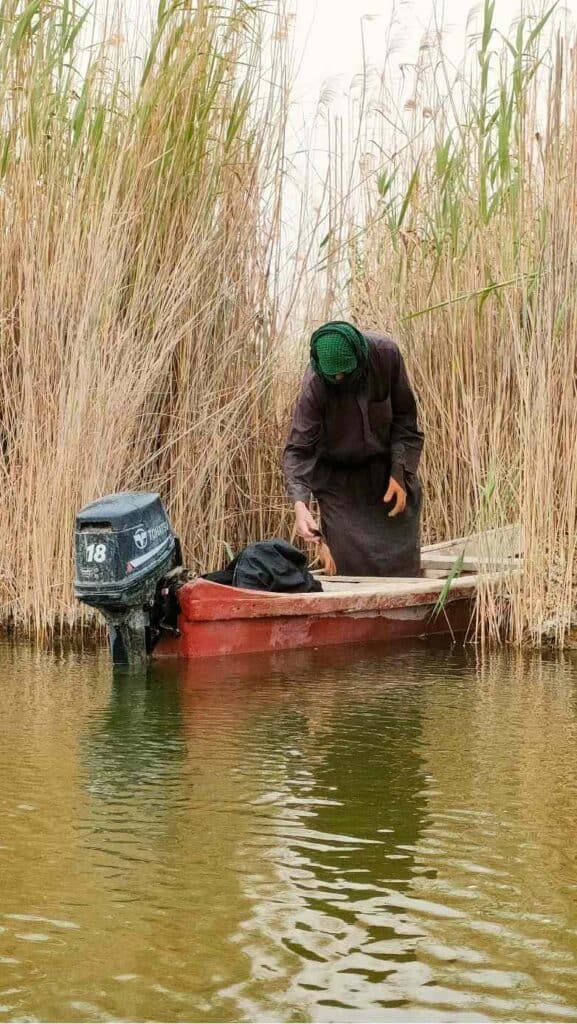
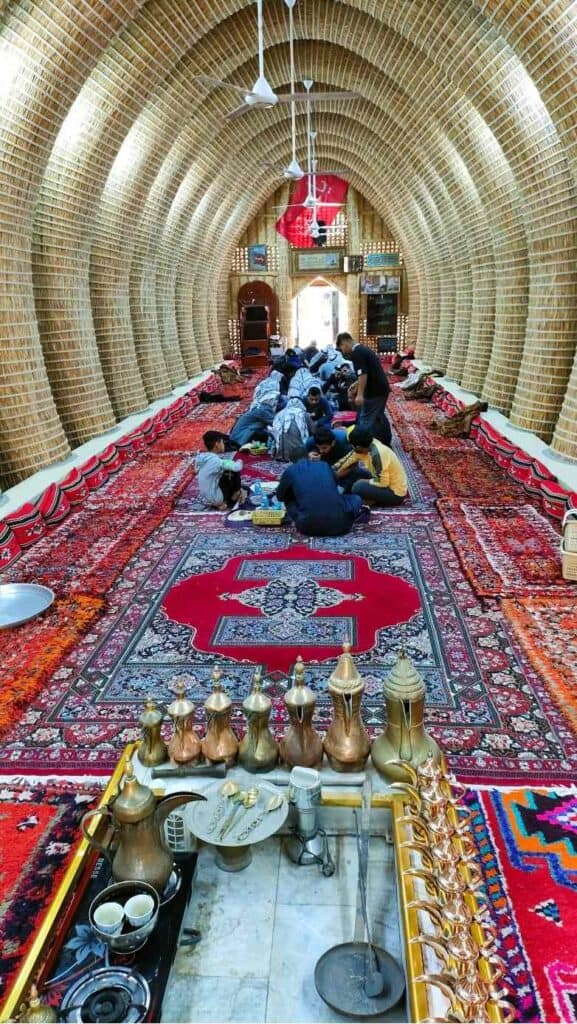
However, the drainage of the Marshlands caused enormous disasters. Saddam Hussein argued that he established the canal to gain agricultural lands and expand oil exploration. The use of chemical weapons, mass arrests, and torture against the Shia population of the wetlands were more of an answer to the Shia uprising in 1991. The chemical attack destroyed most of its unique flora and fauna. The wetlands that initially covered an area of 20,000 km2 shrank to only 10% of that by 2003.
The Marshlands are now recovering, and a significant part was re-flooded. Some of the displaced Marsh Arabs returned to rebuild their villages, but many more did not.
Chibayish is one of the best places to have a boat tour around the marshes. From the boat, you get an insight into the life of the wetlands where water buffalos swim by in groups. The exchange of products also takes place on the water.
I slept in a mudhif converted into a guesthouse for tourists in Chibayish, where matrasses were provided for sleeping after having our meal on the floor. It would have been entirely tranquil had it not been the day before a local wedding. We were invited to join the celebration, where the friends of the groom were screaming and shouting louder than the music.
16. Qurnah (the confluence of Tigris and Euphrates)
Between the Arab Marshes and Basra, you can make a stop in Qurnah, which is said to have been the place of the Biblical Eden, according to the belief. You find “Adam’s tree” next to the Qurnah Tourist hotel. Today, it is where the Tigris and the Euphrates join and continue to the Persian Gulf as a united river called Shatt Al-Arab. For me, seeing this unique geographical spot was definitely worth the stop.
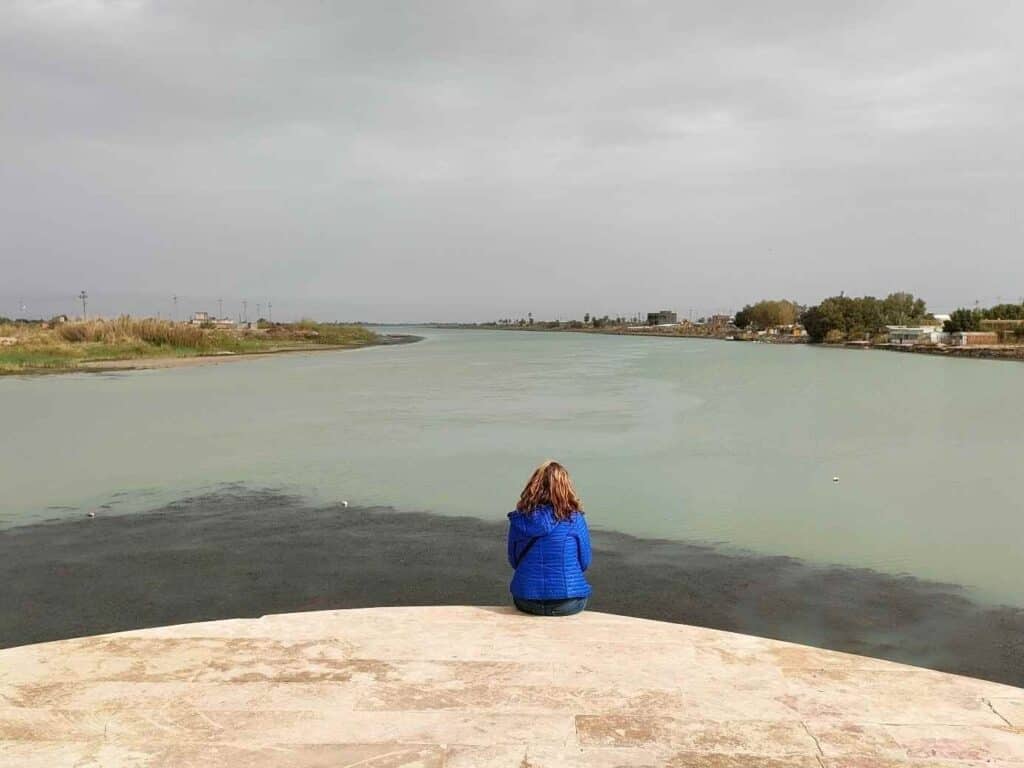
17. Basra
Basra is the second biggest city in Iraq, the “financial capital”, close to the Iranian border in the south. It has become the most important international port in the Gulf during the British after WWI. Basra does not have spectacular tourist attractions; its main attraction is the people who are the friendliest in the world.
It lies along the Shatt Al-Arab River, the confluence of the Tigris and Euphrates crossing Basra that was part of the debated border areas between Iraq and Iran that led to the eight-year-long war. Having a boat ride on the river is a must passing under the iconic bridge.
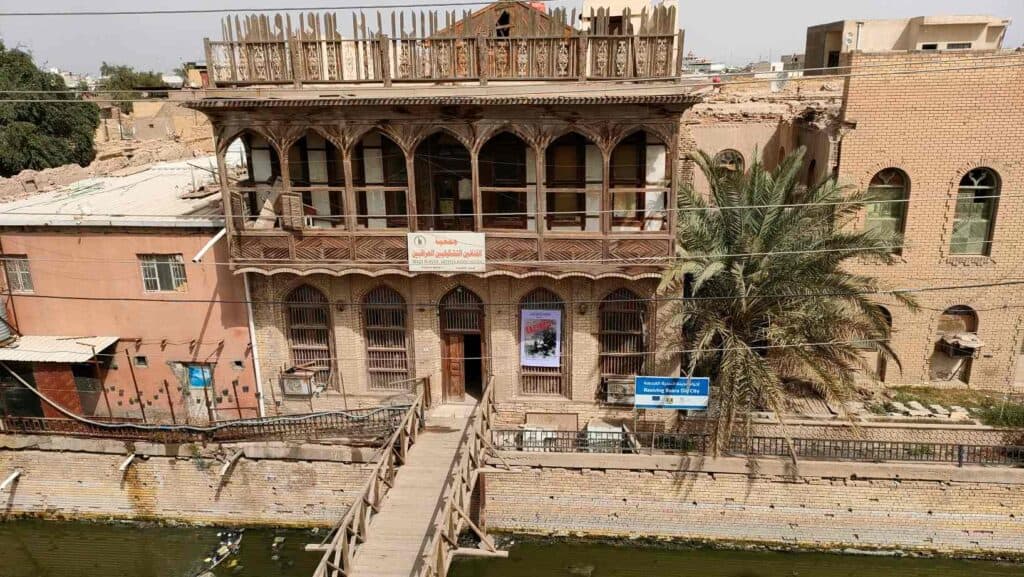
The Basra museum has a remarkable collection with four galleries dedicated to the Assyrian, Sumer, Babylonian, and Islamic civilizations up to 1800 in Iraq. It has some artifacts on display that date back to 6000 BC from the southern province. The museum is located in the former palace of Saddam Hussein that was renovated for this purpose.
Basra is also famous for its houses decorated with finely crafted bay windows with intricate wooden latticework and stained glass on the upper floor of the buildings. They are called the Shanasheels. They caught the wind and served as natural cooling systems.
The houses decorated with Shansheel belonged to wealthy aristocrats and date back to the 16th – 17th centuries. There is still a neighborhood near Ashar where you can observe these mansions that are the symbols of Basra. Unfortunately, they are quite neglected.
Read this guide about the best places to visit in Basra
18. Al-Aksari mosque and Malwiya minaret – UNESCO World Heritage
Samarra, lying on the bank of the Tigris River, is a city in Iraq with 7000-yer-old history. For a short period (836 – 882), it replaced Baghdad as the capital of the Abbasid Empire. The dynasty was the largest empire in Islamic history that ruled from North Africa to Central Asia. Samarra was the political and economic hub of the entire Middle East in the 9th century.
The Abbasid ruler launched extensive constructions in the new capital, including palaces and the Great Mosque, to which the iconic Malwiya minaret belongs. When the capital moved back to Baghdad, it slowly became neglected. Samarra is in the Saladin Governorate, part of the so-called Sunni Triangle enclosed by Ramadi and Tikrit. Despite the Shia shrines, it had always been a predominantly Sunni area.
Samarra suffered heavy damages during the US invasion in 2003. On 22nd February 2006, armed groups bombed the mosque and damaged the dome, while on 13th July 2007, blasts destroyed the minarets. Until now, there are strict security checks to enter Samarra.
In June 2014, ISIS launched a swift military attack on Samarra but was soon repulsed.
Samarra has two main attractions to visit: the Al-Askari mosque and the Malwiya minaret.
Malwiya minaret and the Grand Mosque of Samarra
The minaret belongs to the mosque built by the Abbasid caliph, Al-Mutawakkil, in the 9th century. At that time, it was the largest mosque in the world. According to Islam tradition, the original mosque had a splendid decoration with mosaics of dark blue glass and stucco carvings in floral and geometric motives. The courtyard had a marble fountain in the middle and was encircled by aisles on all sides. The walls were covered with blue, white, or gold glazed or glass panels.
The Mosque of Ibn Tulun in Cairo, Egypt, was built based on the design of the one in Samarra.
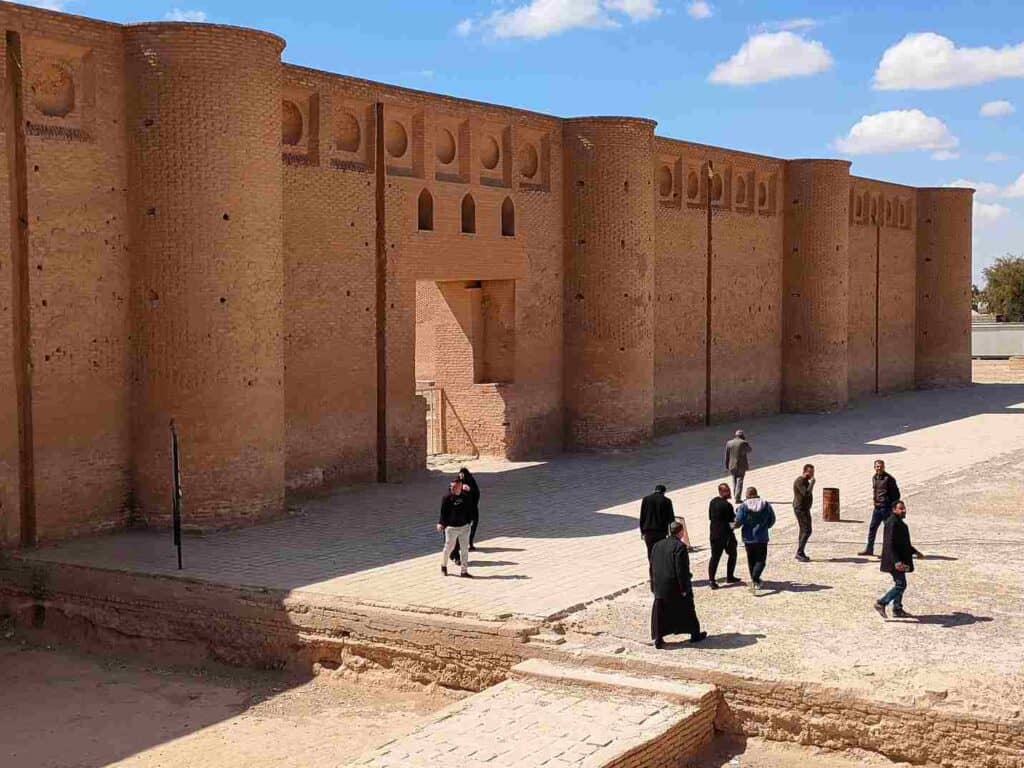
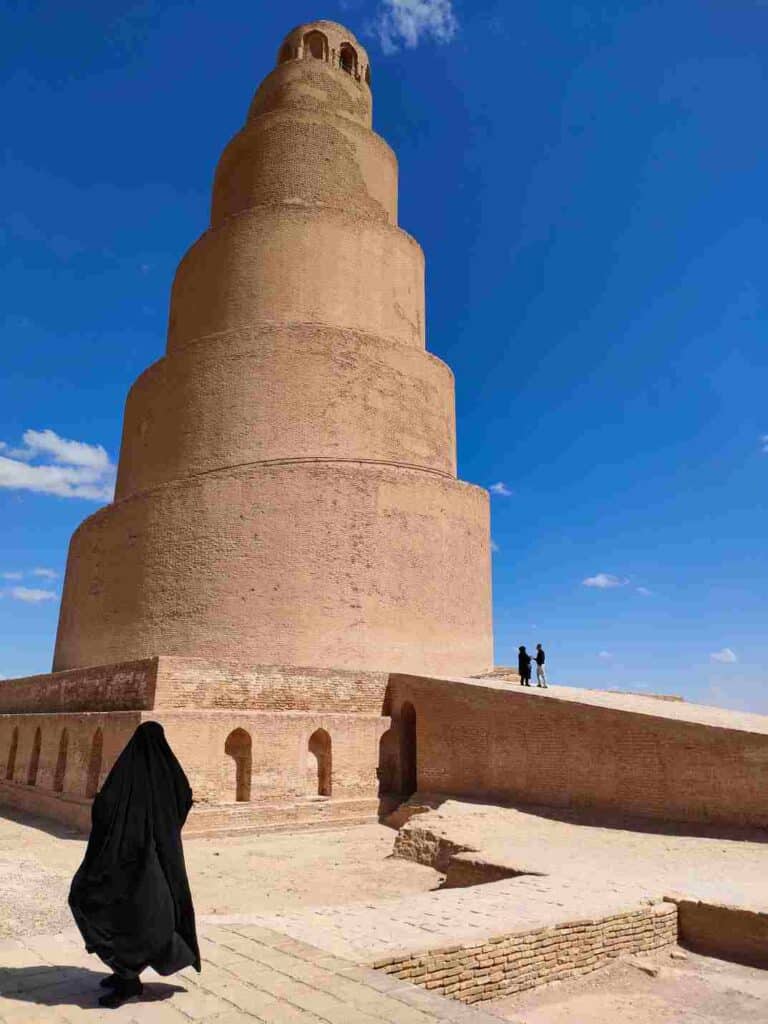
The minaret catches the eye with its cone shape encircled by a spiral ramp. There is no barrier, so it is frightening for those with vertigo. Some say that the Mesopotamian ziggurats inspired the unique design. Though, as opposed to the ziggurats’ square base, it had a circular base with a spiral tower. Nothing like that was built before in the Islamic world. It was originally connected to the mosque by a sandstone bridge.
The mosque was destroyed in the 13th century leaving only the outer wall and the minaret intact. However, a lot has been revived due to extensive restoration in the 20th century.
The minaret is the place from where the muezzin called people to prayer. Insurgents targeted the small pavilion in 2005 as they thought the US troops had used it as a sniper nest.
Al-Askari mosque
The Al-Askari mosque recalls the beauty of Kerbala and Najaf. It is the resting place of the 10th and 11th Shia Imams, Ali al Hadi al Naqi, and his son Hasan al-Askari, making it an important Shia pilgrimage site. According to the Shia belief, the last 12th “hidden Imam” was born and went into hiding in Samarra in 874. Since then, Shias have been waiting for the return of the “Mahdi,” the Savior. They believe that he was hiding in a cave under the mosque of Samarra.
Hakimah Khatun and Narjis Khatun (the Mahdi’s mother), the Prophet’s female relatives, are also buried in the mosque and are highly respected by both Shia and Sunni Muslims.
A smaller version of the Malwiya minaret (20 m) is, called the Abu Dalaf Mosque is approximately 20 km from Samarra. It was built byAbu Dalaf, a commander in 860–861.
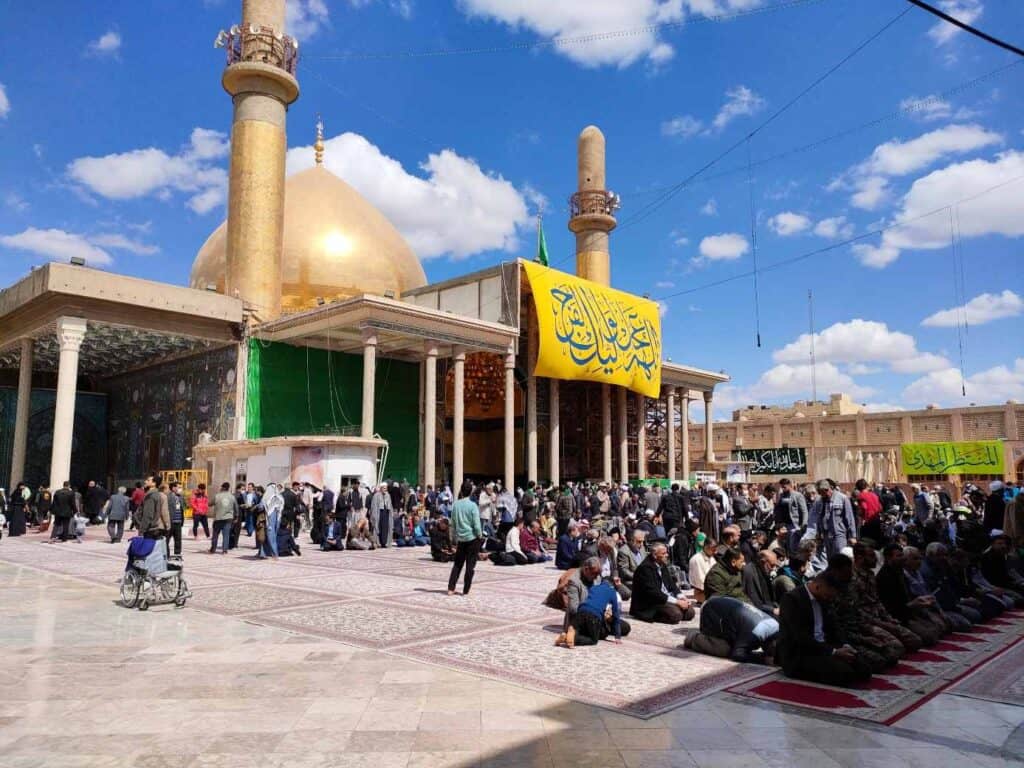
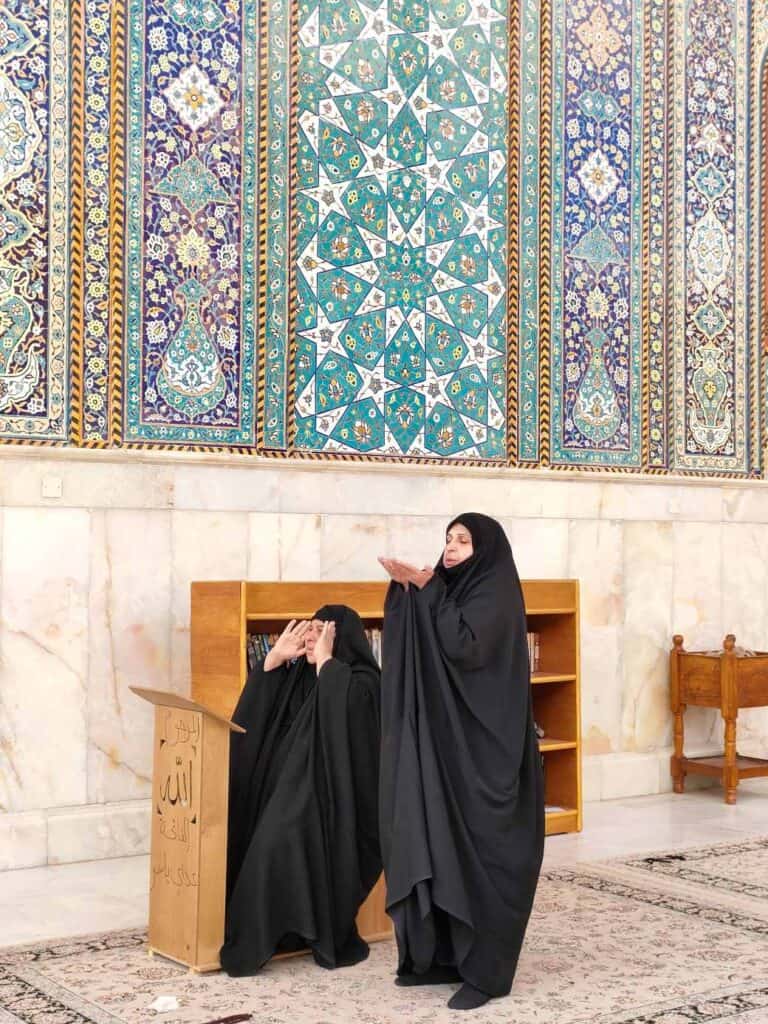
How to visit Samarra?
Shared taxis depart from Baghdad to Samarra frequently from Al-Alawi Northern bus terminal (15 000 IQD, 2 hours).
Entrance fee to Samarra (Mawiya minaret and Al-Aksari mosque): 25 000 IQD
Checkpoint at Samarra: Samarra is one of those places where they ask you to keep your passport at the security control during your visit. In this way, they make sure you return the same way. No need to worry about it; this is absolutely normal.
Visit Abu Dhalaf: During my visit, the policeman at the checkpoint told me that I could go to Abu Dhalaf on my responsibility because it is not under their security control. Since I was alone as a solo female traveler, I decided not to take the risk.
19. Tikrit
Most travelers skip Tikrit as it is not the most beautiful place in Iraq. It will always be associated with Saddam Hussein, who was born in the nearby Al-Awja village. Saddam as president of Iraq, carefully chose his politicians from his Sunni Tikriti tribe.
Tikrit’s history goes back to Babylonian times. Salah al Din al Ayubbi, the founder of the Ayyubid Dynasty and known as Saladin in the west, was born in Tikrit in 1138. He captured Jerusalem during the Crusader wars.
Saddam spent a lot of money on making Tikrit an attractive city. He constructed palace complexes overlooking the Tigris River, which were partially damaged during the Gulf wars. During Saddam, ordinary people were not allowed to enter the city. They usually had no idea about the luxury of these palaces.
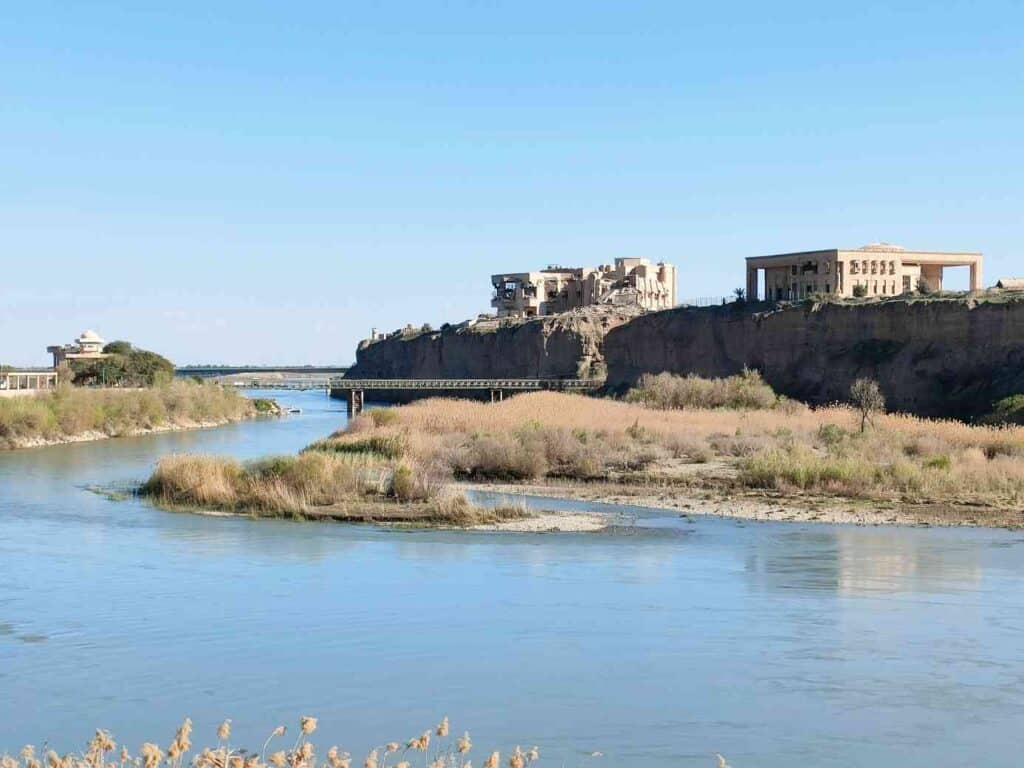
Saddam was finally captured in ad-Dawr near Tikrit in 2003 during the US invasion, where he had sheltered for six months before.
The Shrine and Mausoleum of Saddam Hussein and his family are in Al-Awja. However, it is not something Iraqi people are proud of, and they refuse visitors to come to see the place.
Tikrit was the scene of the Camp Speicher massacre, one of the cruelest acts of ISIS. On 12th June 2014, the Islamic State killed more than 1000 Shia and non-Muslim cadets at the Tigris riverbank. A small memorial is seen on the spot with images of victims, flowers, and candles at the Tigris river bank.
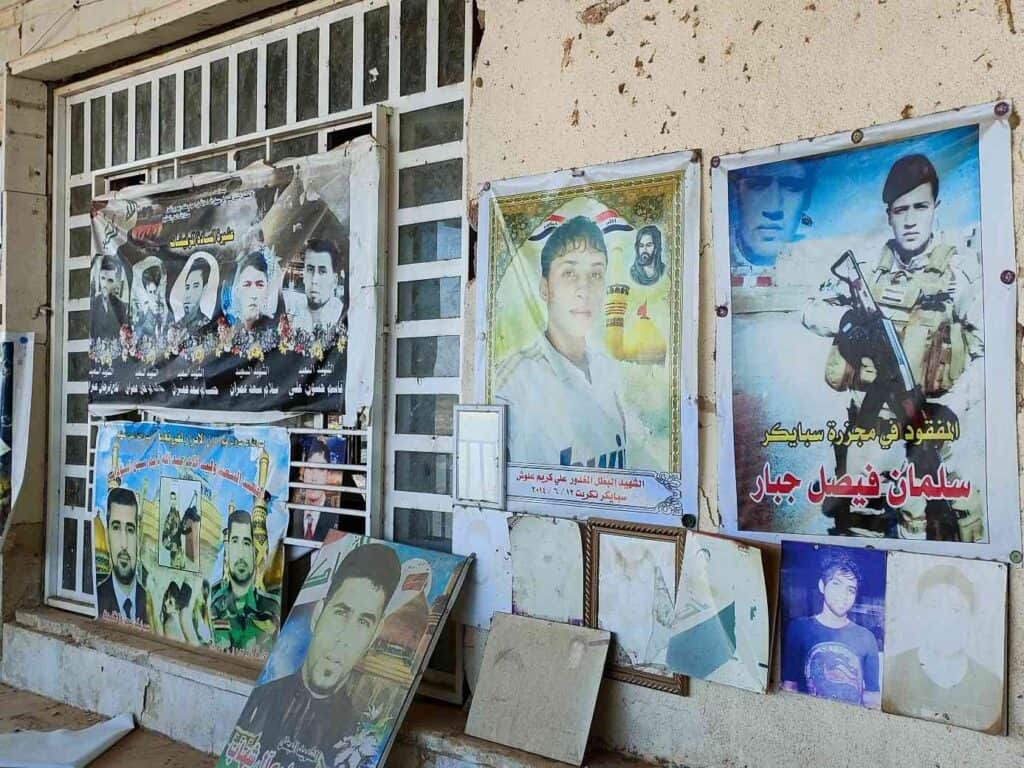
How to get there?
Tikrit is located along the Baghdad-Mosul highway. The Camp Speicher massacre memorial site is an enclosed area guarded by soldiers. However, if you go there, they usually let you in to have a look.
From Samarra: if you come from Samarra, you need to take a private taxi, which costs approximately 30 000 IQD.
20. Hatra – Unesco World Heritage and one of the most places in Iraq
The “City of the Sun”, Hatra developed into a trading center from a small Assyrian village. It flourished in the 1st and 2nd centuries under the Parthian rule along with a series of renowned Arab cities like Palmyra, Petra, and Baalbeck along the silk road. The golden period ended when the Sassanid king Shapur I destroyed it in 258. Hatra was deserted after, and its ruins were only discovered in the 19th century. For a long time, it was the only UNESCO World Heritage Site in Iraq.
The center of Hatra comprises a group of temples with massive columns that remained surprisingly intact.
Rumors started to spread in 2015 that ISIS plans to flatten the site, but apart from engraved images and statues, the walls and towers remained intact, and the damage was smaller than expected. During their two-year-long occupation, it served as training a training camp, the statues of Gods being used as target practice.
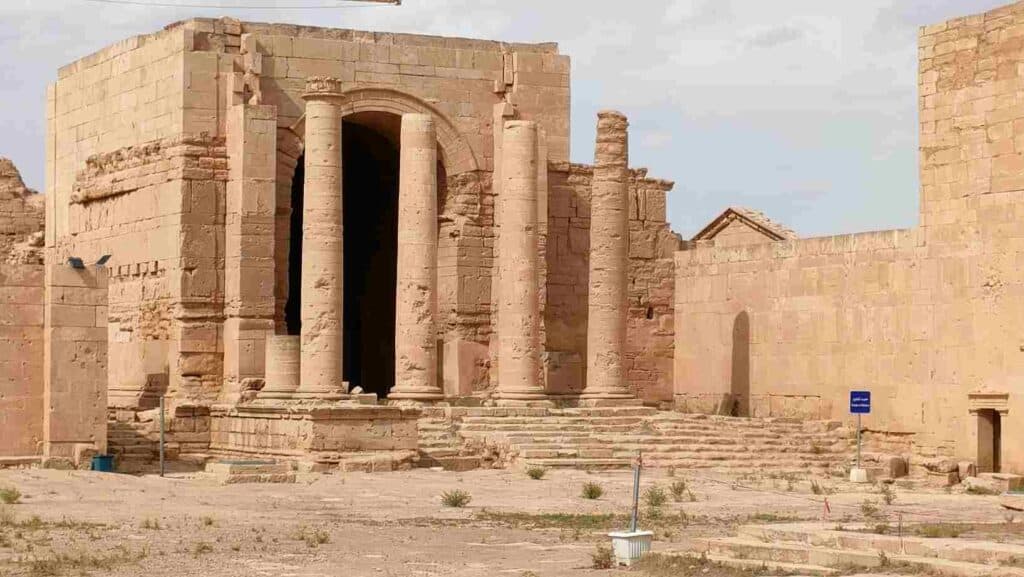
How to visit Hatra?
You must know that the rules for visiting Hatra are constantly changing for security reasons. It is located in a deserted area far from any cities, an ideal refuge for the remaining ISIS fighters in Iraq. Sometimes they ask for a special permit to get to Hatra that you can get from the Ministry of Interior in Baghdad. Contact locals to help you get a permit if needed. In any case, always go at the latest in the afternoon, because it may be unsafe in the evening. For safety reasons, soldiers at the checkpoint accompany visitors and limit the time of visit. When I was there, I didn’t need any permit to access Hatra, but the soldiers urged us to visit the complex within 15 minutes.
Hatra is one of the most beautiful places in Iraq and can quickly become the highlight of your Iraq travel itinerary.
21. Mosul – the most interesting place to visit in Iraq
Mosul, the second largest city in Iraq, suffered enormous damages during the three-year-long occupation of ISIS. Since its liberation in 2017, the former capital of ISIS has been under massive reconstruction.
Mosul, the second-biggest city in Iraq, is a must-stop when traveling to Iraq. The architectural masterpieces behind the ruins tell how splendid this city was before. Visiting Mosul at the bank of the Tigris river is a great way to support locals who are more than happy to see tourists coming to their city being rebuilt from ashes.
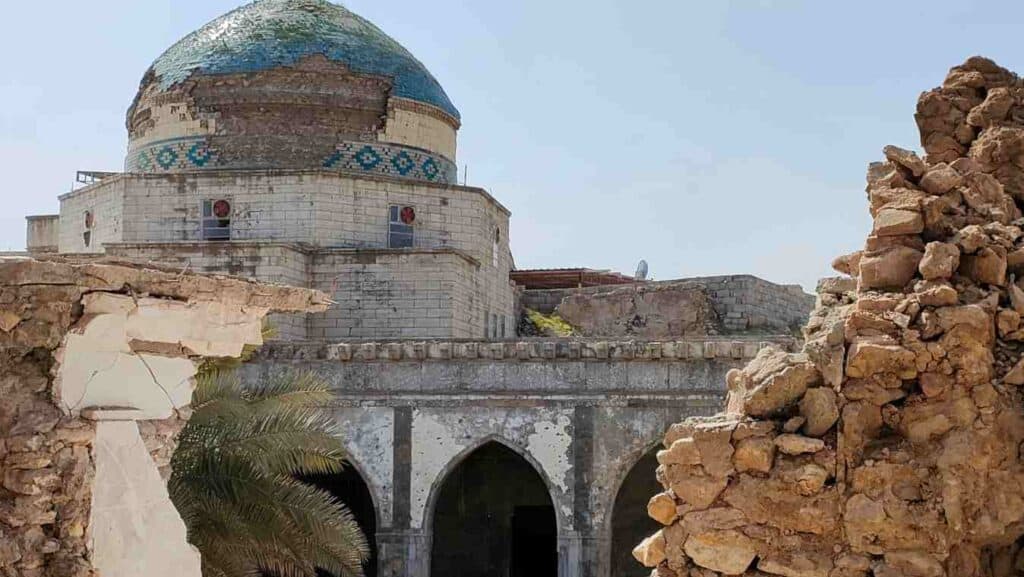
This detailed travel guide helps you understand Mosul and gives you practical advice on where to sleep, and top things to do in Mosul.
22. Mar Mattai monastery
The Mar Mattai monastery is one of Iraq’s most important and oldest Christian sites, maintained currently by the Syrian Orthodox Church.
The mountains served as a refuge for several monks who had constructed monasteries already as of the 4th century. Several small villages and a new church have recently been built on the slopes leading to the monastery for Christians fleeing persecution in Baghdad.
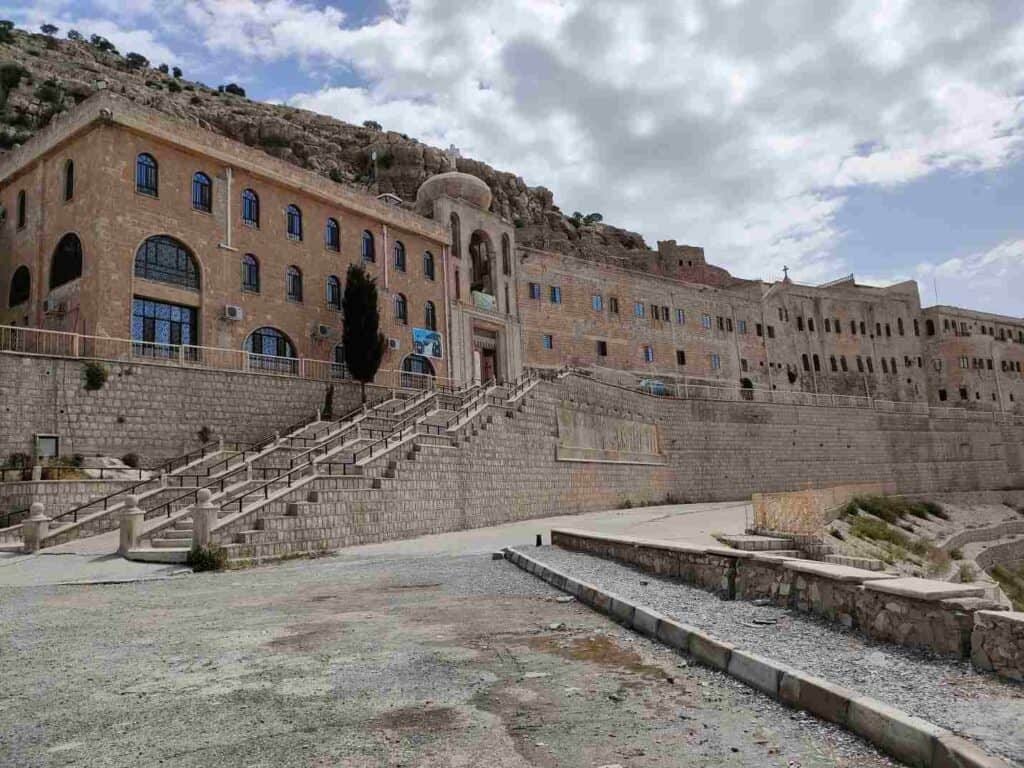
The Mar Mattai was enforced by a wall already in the 5-6th century against the attacks of Kurd tribes, who still pose a danger. The Tigris River can be seen from the monastery’s terrace in clear weather.
Mar Mattai was a hermit who chose the path of asceticism, isolation, and seclusion. He ended up in Nineveh, where he became known for his gift of healing the sick. According to the legend, the first monastery was erected by Sennacherib, the king, after executing his son, prince Behnam.
Every year, on September 18, several Christian pilgrims arrive to commemorate the day of Mar Matti’s death.
Important: there is currently stricter security control around Mar Mattai monastery, for which they probably ask you to leave your passport at the last checkpoint to ensure you return the same way. It is currently (2022 May) impossible to continue toward Iraqi Kurdistan from the Mar Mattai monastery.
How to get there?
You can get there by private taxi only. The closest city is Mosul, but you can also get there from Erbil.
Insurance: Safetywing is a cheap travel and medical insurance that also covers COVID-related issues in most countries, including Iraq.
Flights: Use Google Flights or Skyscanner to book your flight to get the best flight offers.
BEST PLACES TO VISIT IN IRAQI KURDISTAN
What you should know about Iraqi Kurdistan
Iraqi Kurdistan enjoys a special autonomy status in Iraq and aims to reach complete independence. The Kurdish population is spread across mainly four countries: Iraq, Iran, Syria and Turkey, so the geographical area is called Kurdistan. Kurds were often promised to be an independent state, which never happened though the Kurds were already an ancient people centuries before Rome was an empire. They are often called the “people without a country”. However, the Kurds in each country have a different religion, language, etc., and they seek individual independence rather than being united.
Religion
Kurds have a mixed religion: Muslim, Christian, Jew, Yezidi, Sufi and Bahai. Lately, many Iraqi Kurds have turned to the Zoroastrian religion and called themselves Zoroastrians, although it is not something they can choose.
Governance
Erbil is the seat of the Kurdish Parliament that the Iraqi government set up in the 1970s. There is an intense rivalry between the two Kurdish leading parties, the PUK (Patriotic Union of Kurdistan) and the KDP (Kurdistan Democratic Party), led by the Talabani and Barzani families, respectively. The clash between the two parties turned into a civil war from 1994 to 1997. Since then, the PUK has set up an alternative government in Sulaymaniyah. After the US invasion, a unity government was finally formed in 2006 from the representatives of both parties.
The Kurdish Regional Government (KRG) has executive political power in the autonomous Kurdistan Region of northern Iraq.
They held a referendum about independence in 2017, where an overwhelming majority voted for an independent Iraqi Kurdistan. However, Baghdad refused to acknowledge it, saying that it does not support any initiative to undermine the unity of Iraq. Iraqi Kurdistan remained an autonomous region, but the referendum expressed its vision to secede. There is constant tension between Iraqi Kurdistan and Federal Iraq about the status of Kirkuk. Neither wants to give up the city, the second biggest source of oil in Iraq.
Iraqi Kurdistan, a haven for refugees
During the Syrian Civil War, tens of thousands of Syrian refugees, many of them Syrian Kurds, flocked to Kurdistan.
The warm hospitality is part of Kurdish tradition (not less that of Iraq) and their men are famous for being fierce warriors. They also claim that Saladin, who conquered Jerusalem when it was at the hand of the Crusaders, was also originally Kurdish. A Kurd never calls this part of Iraq northern Iraq, but Iraqi Kurdistan, which means “the place of the Kurds.”
When ISIS (Islamic State of Iraq and Syria) moved over to Iraq, the Kurdish Peshmergas (militant force of Iraqi Kurdistan) bravely fought against the jihadists and won the world’s attention and support. Christians, Yezidis and Shias were killed or driven out of their home and escaped in masses to the Kurdish mountains. Even other Iraqis from Fallujah, Ramadi, Baghdad and Mosul left temporarily their home and moved to Erbil. The “people without a friend,” as Kurds were often called, provided a haven to all refugees.
Landscape
Iraqi Kurdistan is a mountain region in sharp contrast with the rest of Iraq, surrounded by the Zagros and Taurus mountains carved by winding rivers deep in canyons. Some say it takes these mountains to make a Kurd.
Kurds believed they were the descendants of ancient Medes, which gave them pride and identity.
Transport in Iraqi Kurdistan
Shared taxis are much less available than in Federal Iraq, so you must arrange your transportation with private cars.
Safety in Iraqi Kurdistan
Unlike Baghdad, Iraqi Kurdistan has enjoyed much safety since 2005. Thanks to its stability, renowned online and print magazines (New York Times, National Geographic Traveler and Conde Nast) named it a must-see travel destination.
23. Rabban Hormizd monastery and Alqosh
Alqosh is a small town 45 km north of Mosul that has always been a religious center for Sumerian, Assyrian gods, or Judaism. Later, its inhabitants were the first ones to convert to Christianism, and it still has an important Chaldean Catholic Assyrian community. Christian minority is now on the verge of extinction in the land where they had been present since the earliest times of Christianism. There were 1.3 – 1.5 million Christians in Iraq before the US invasion in 2003. It reduced to 500,000 before ISIS began its genocidal campaign. Today they amount to 150 000. During the last five years, Christians of Iraq left the country in masses.
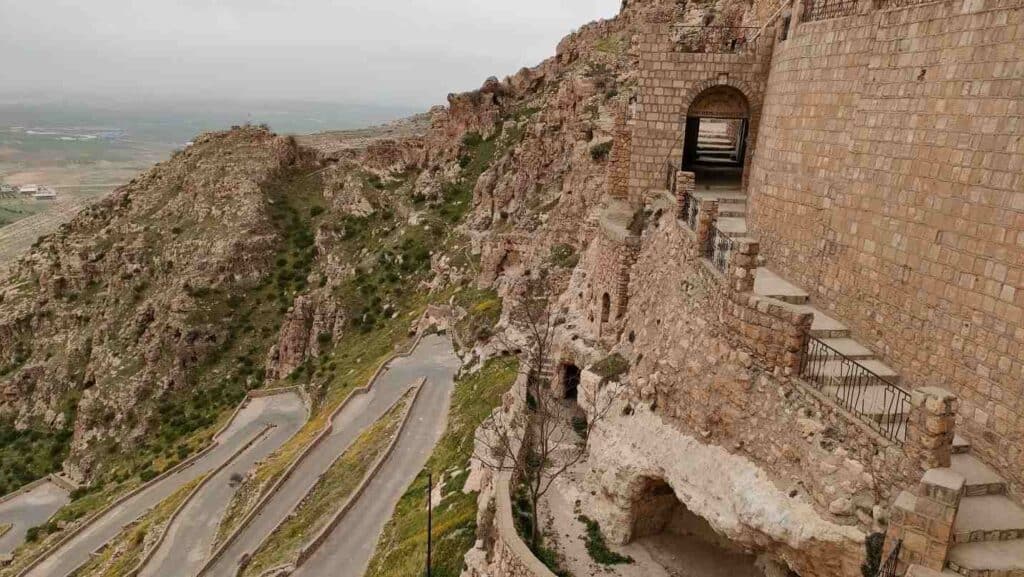
There are two monasteries and four churches in Alqosh, with exclusively Christian inhabitants, who speak Syriac, a dialect of Aramaic, the ancient language spoken by Jesus of Nazareth. Alqosh is the best place to learn more about Christianism in Iraq.
The Bible says that Prophet Nahum lived here, whose grace with ancient Hebrew texts is found in the center. Earlier, many Jewish people visited the site site.
Many Christians fled Alqosh during the threat of ISIS as the jihadists were only stationed only a couple of km away. However, some stayed and bravely fought with the Kurdish Peshmerga soldiers to keep them away.
The Monastery of the Chaldean Church has an impressive location carved into the rocks overlooking the village of Alqosh. Rabban Hormizd (Rabban means monk in Syriac) founded it in about AD640 is located in the autonomous Kurdistan region of Iraq and was a primary center of the Church of the East. The monastery was attacked several times, forcing the surviving monks to abandon it temporarily. In 1838, Kurds attacked Alqosh, whereby monks and hundreds of Assyrian Chaldeans died.
After the turbulent years, in 1859, with the financial support of the Vatican, a new monastery was built a few kilometers away, where it was safer.
How to get there?
You can go there from Erbil, Duhok (Iraqi Kurdistan) or Mosul (Iraqi Kurdistan)
24. Erbil – the capital of Iraqi Kurdistan
Erbil is the complete opposite of Baghdad. The capital of Iraqi Kurdistan lacks the chaotic atmosphere that is so common in the Middle East. It underwent rapid economic growth after the US invasion. A new international airport was built with office towers, luxury restaurants, pleasant city parks, elegant neighborhoods, and top cars driving around on the traffic-jam-free modern roads. The capital of Iraqi Kurdistan reflects what is labeled as the “Kurdish miracle.” Private schools with English education opened, and some students got admission to the finest universities in Europe. It enjoyed a yearly economic growth of 10%.
The new law in 2006 guaranteed equal conditions for foreign and domestic investments removing any distinction that further eased the influx of foreign capital.
It seems that Erbil is on the way to becoming a small Dubai as a shopping and entertainment center. However, Erbil is one of the oldest settlements in the world, dating back to the 5th millennium BC. But not much is seen from that.
Despite all that, Baghdad has a historical ambiance that does not exist in Erbil, and I found Baghdad a much more interesting place.
What to visit in Erbil?
Erbil’s most important heritage site, the citadel, overlooks the Shar Garden square and the surrounding Qaysari bazaar in the city center. This is the liveliest part of Erbil, where locals stroll around in the evening. The Mudhafaria minaret is another historic monument in Erbil.
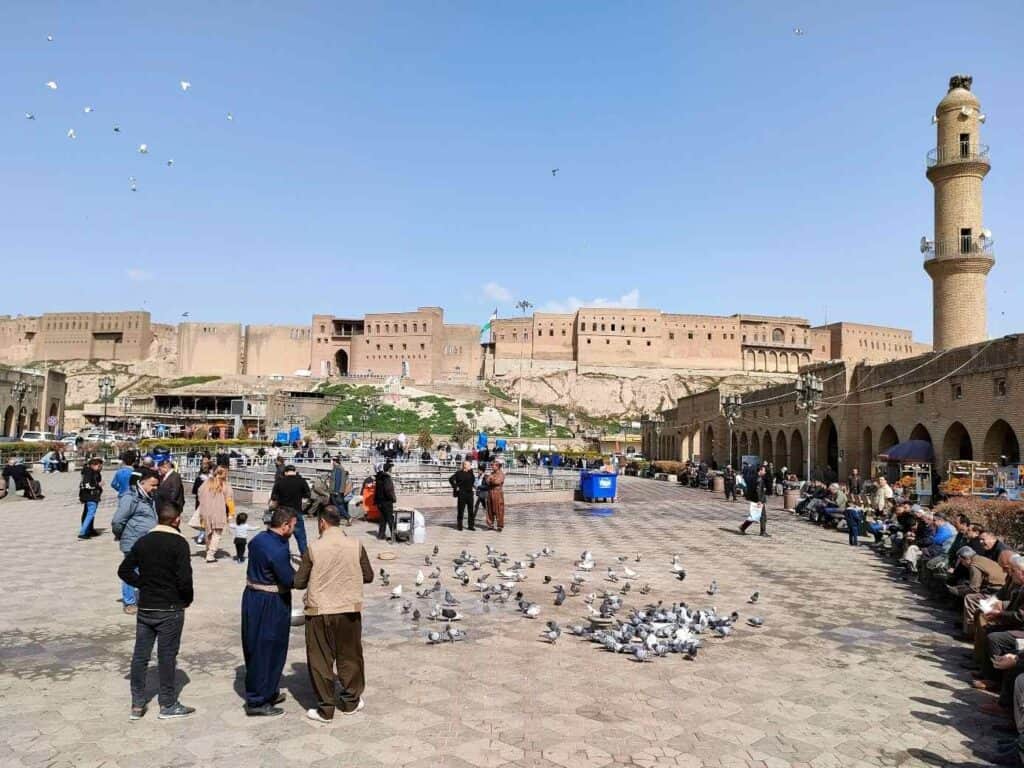
Erbil is a commercial hub with a large expat community and several NGOs, which led to the opening of several international restaurants.
Ankawa, the Christian neighborhood of Erbil, is a great place to go out with bustling nightlife and liquor shops.
The Jalil Khayat mosque in Erbil is an impressive recently built mosque in Erbil, the capital of Iraqi Kurdistan. Jalil Khayat, a wealthy man from Erbil, financed the construction, and when he died in 2005, his son finished the project to be inaugurated in 2007. The main prayer hall can accommodate up to 2000 people. It is pretty similar to the Muhammad Ali Mosque in Cairo and the Blue Mosque in Istanbul. The brick decoration with colorful patterns is a unique feature of the mosque.
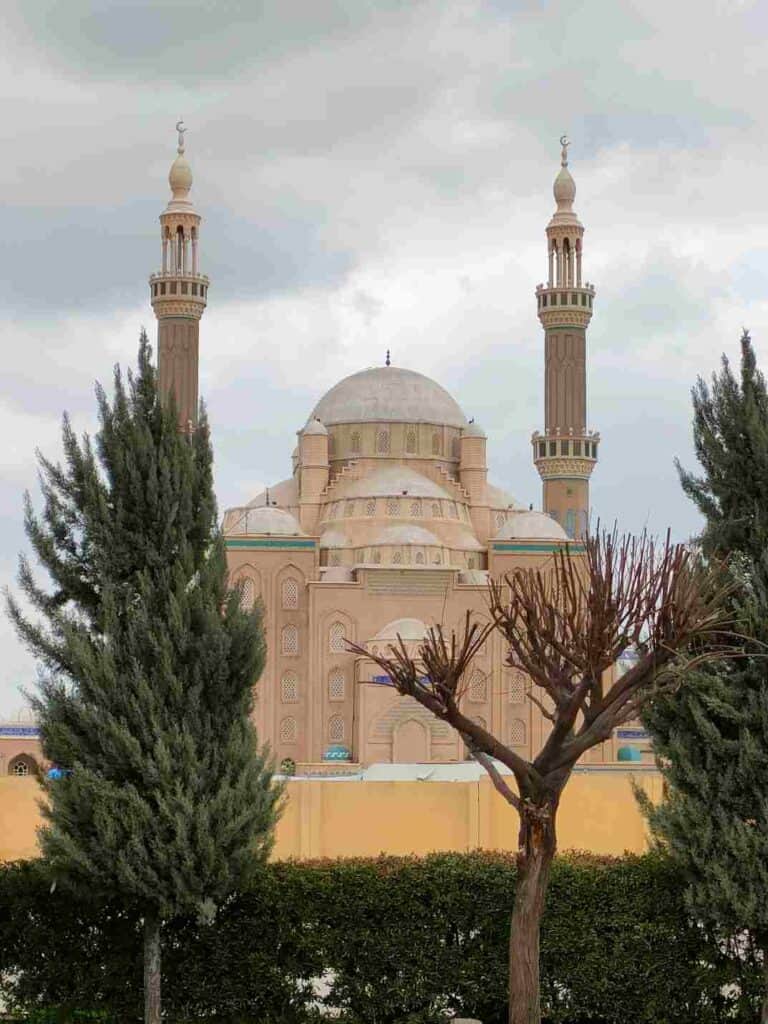
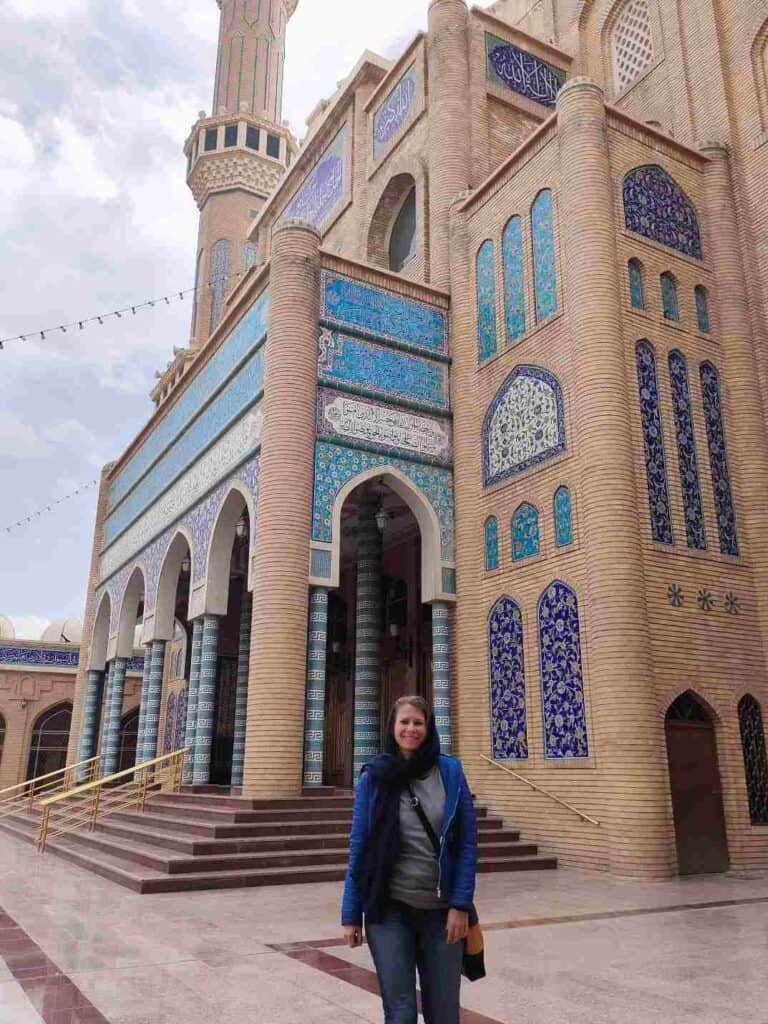
The Mam Khalil Tea House and the Machko Chai Khana are famous traditional places where you can enjoy a cup of tea or coffee and smoke shisha. They both were opened in the 1940s and 1950s.
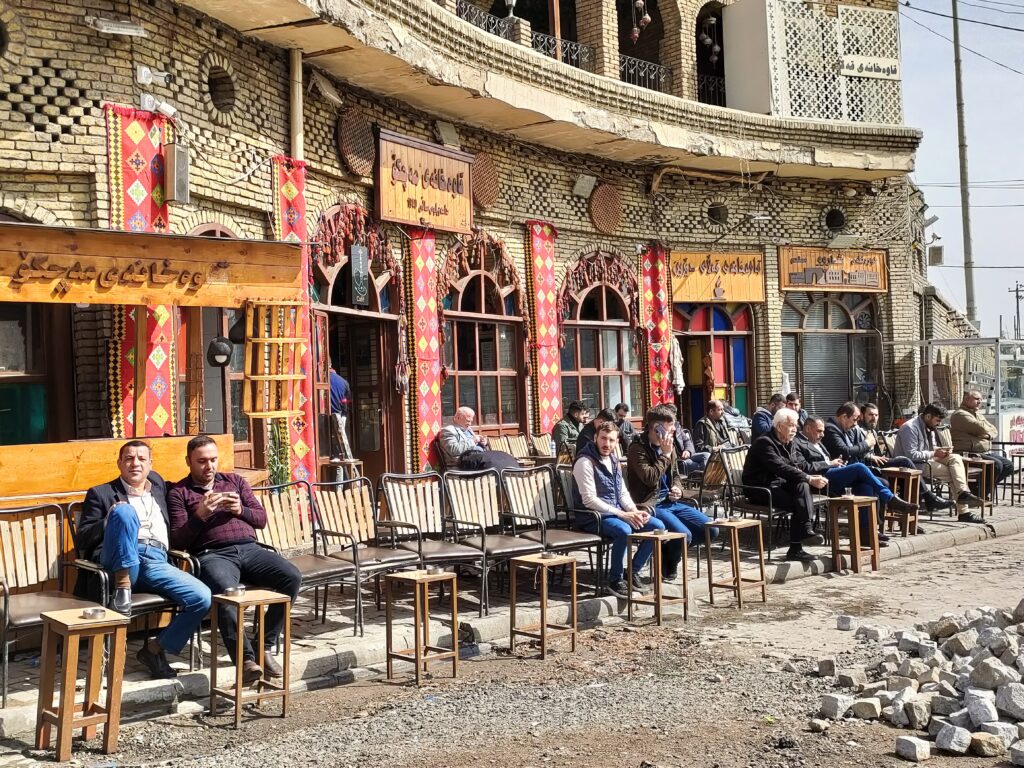
Other attractions in Erbil are the Kurdish textile museum, the Erbil Museum of civilization, Shanidar Park and Art gallery, Erbil’s oldest permanent exhibition space, Sami Abdul Rahman Park, the biggest and greenest Erbil park opposite the Kurdistan parliament building and Council of Ministers. It takes the name of the former prime minister killed in a suicide bomb attack in 2004.
Where to sleep in Erbil?
Unlike in Iraq, a wide choice of mid-and high-range hotels can be booked through booking.com. Around the citadel, you can easily find low-budget hotels for 25-35 000 IQD.
Erbil International and Erbil Rotana (opposite Park Sami Abdulrahman, the largest park in Iraq) are two renowned luxury hotels.
Read more about all you have to know before traveling to Iraq
25. Suleymaniyah (Slemani)
Sulaymaniyah is one of the must-see Iraqi Kurdistan destinations. It is a modern city with skyscrapers, a charming downtown and a couple of green parks.
The University of Sulaymaniyah is the largest in the entire Iraqi Kurdistan region and provides Kurdish, English and Arabic education. The American University of Iraq- Sulaymaniyah, founded in 2007, is another prominent institute of higher education.
The most important tourist attractions of Sulaymaniyah:
– Sulaymaniyah Museum: It has many archeological artifacts from Mesopotamia, Kurdistan, and ancient Persia on display. It is the second biggest after the National Museum of Baghdad.
Entrance fee: free of cost
– The bazaar downtown: stroll around the central bazaar, try some delicious fast food, and have a café in Pasha’s coffee house.
– Amna Suraka (Red Prison Museum) – the former detention center of Saddam was converted into a museum about the genocide campaigns committed against the Kurds´. The building was the headquarter of Saddam’s intelligence service, the Mukhabarat (1979-1991), and thus the scene of imprisonment, torture and rape. When the Peshmerga Kurdish soldiers took it over, it became a museum in the early 2000s. Some Iraq army tanks and artillery still stand in the courtyard. The hall of broken mirrors, originally the canteen of Baathist officials, with 182,000 small pieces (each piece represents a Kurd killed during the Anfal campaign is a unique part. The 4 500 light bulbs refer to the number of Kurdish villages destroyed.
Another section is about the Peshmerga fighters killed by ISIS. It is one of the main attractions of Sulaymaniyah and Iraqi Kurdistan.
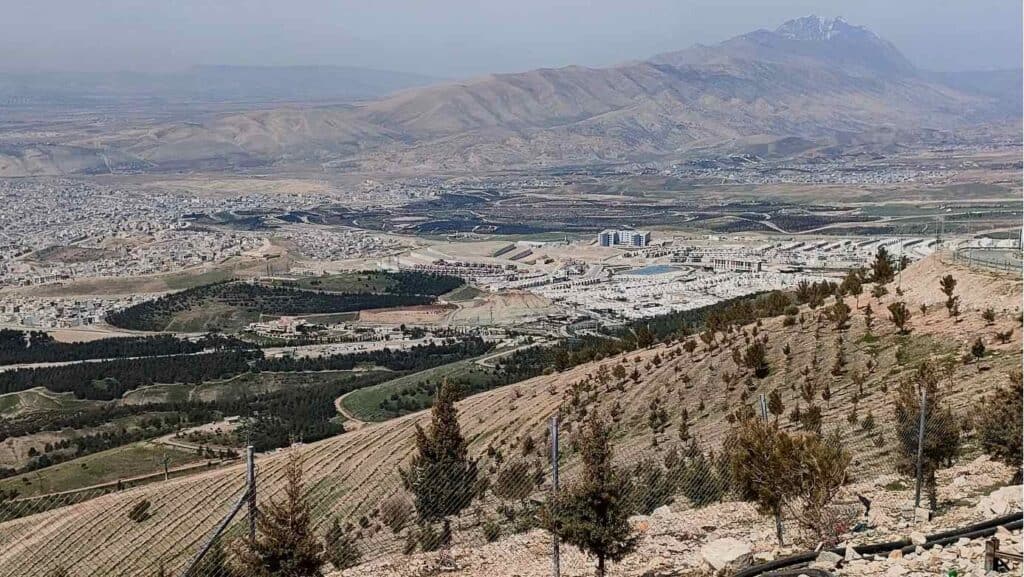
The building outside still shows the bullet marks from the battle of 1991 when Peshmerga soldiers and angry civilians attacked the headquarter and killed hundreds of intelligence officers.
Entrance fee: free of cost
Opening hours: closed on Friday
– Goizha Mountain Lookout: Take the road behind the Chavi Land Amusement Park to get to the top of the mountain with the best view of Sulaymaniyah. It’s one of the most popular places for locals to watch the sunset and enjoy a picnic.
Where to sleep in Sulaymaniyah?
Pyramid Street in the bazaar area has a range of cheaper hotels. You can easily find one of them without booking.
Check more hotels in Sulaymaniyah
26. Halabja – the scene of the massacre
Halabja went down in history as the scene of the genocide that happened at the end of the eight-year-long Iraq-Iran war on 16th March 1988.
It was a traditionally conservative religious city that supported Iran during the Iraq-Iran war. This could have been the reason…
The senseless war against Iran ended in August of the same year. Only a year later, Saddam invaded Kuwait in 1990, provoking the first Gulf war.
According to the official version, it was part of the “Al-Anfal campaign” that Saddam launched in 1988 against the Kurdish minority, in which 50-100,000 Kurds died. In Halabja, thousands of Kurds immediately fell victim to the chemical attack, and 7-10,000 were injured. The mastermind behind the attack was Ali Hassan al-Majid, “Chemical Ali”, Saddam’s cousin. After court trials, he was hanged, while others were imprisoned. It was the largest chemical weapons attack directed against the civil population. The Supreme Court declared it genocide against the Kurdish minority.
Saddam was executed on another conviction on 30th December 2006.
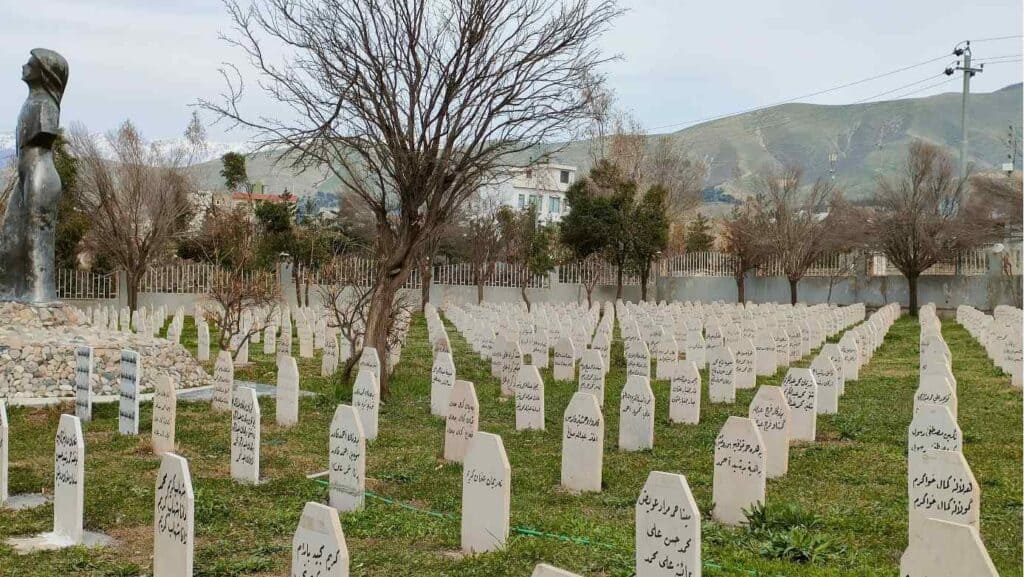
Over a million Kurds escaped to neighboring Iran and Turkey. Several foreign organizations helped to rebuild Kurdistan.
The sarin gas gave no chance for the people to survive. It kills the nerves within 10 minutes, while the mustard burns the skin and the burning lasts for years. Some instantly went blind, and the gas attacked the lungs. The simultaneous bombings prevented the survivors from escaping. Following the attack, they bulldozed the town and placed the dead in mass graves.
The Halabja attack had immense consequences. The soil became contaminated and thus unsuitable for agriculture. The region soared in infertility, cancers, birth defects, blood diseases, insomnia, depression, and mental disorders.
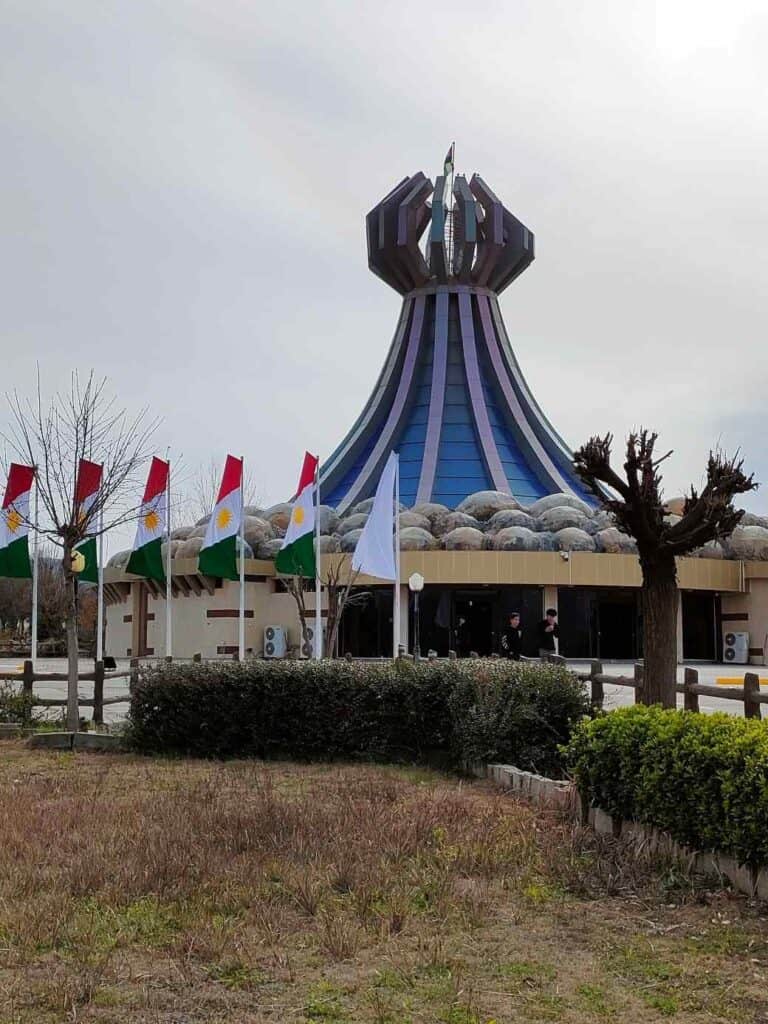
Iran’s involvement in the attack was also raised at a certain point. But maybe just to justify the US support of the war against Iran. The US American companies sell the tools that were used on the day in 1988. It is hard to believe or make a conclusion on what happened exactly when political interests have a huge role.
However, traveling around Iraq and talking to people, I learned that some Iraqis denied Saddam’s responsibility for the attack, and he never acknowledged it during the court procedure.
The Halabja massacre is an event engraved in the Iraqi minds and one of the most decisive events of recent history. On the anniversary in 2006, demonstrations erupted, and the Museum was set on fire.
The Memorial of Halabja
If you go to Halabja, a museum stands there as a reminder of the tragic event. The memorial displays shocking photos of children and adults, all victims of the chemical attack are displayed that were made on the scene. However, it does not have a sorrowful atmosphere as you would think with children running around.´
Cemetery of the victims
Some kilometers further, you can also see the graves of victims you should visit.
At the Halabja cemetery entrance is an inscription: „Ba’athists should not enter here”.
How to get there?
Shared taxis depart regularly from Sulaymaniyah to Halabja.
27. Dokan lake
The lake is 65 km from Sulaymaniyah and another beautiful place in Iraqi Kurdistan. After the fall of Saddam, the sleepy town of 5000 started booming. It is one of Kurdistan’s main resorts with fish restaurants, chalets and hotels.
How to get there?
You should only include the Dokan Lake in your Iraqi itinerary if you have enough time as it lies two and a half hours’ drive from Erbil and Sulaymaniyah.
28. Rawanduz and Soran
Soran is a city in the Erbil governorate and an ideal place to discover the most beautiful natural attractions and places of Iraqi Kurdistan and Iraq. It was named after the Sorani Kurds who inhabit the region.
The following famous natural attractions are only up to 10 km from Soran:
– Bekhal waterfall
– Geli Ali Beg Waterfall
– Rawanduz valley with several viewpoints
How to go to Soran?
From Erbil: a shared taxi costs 10 000 IQD
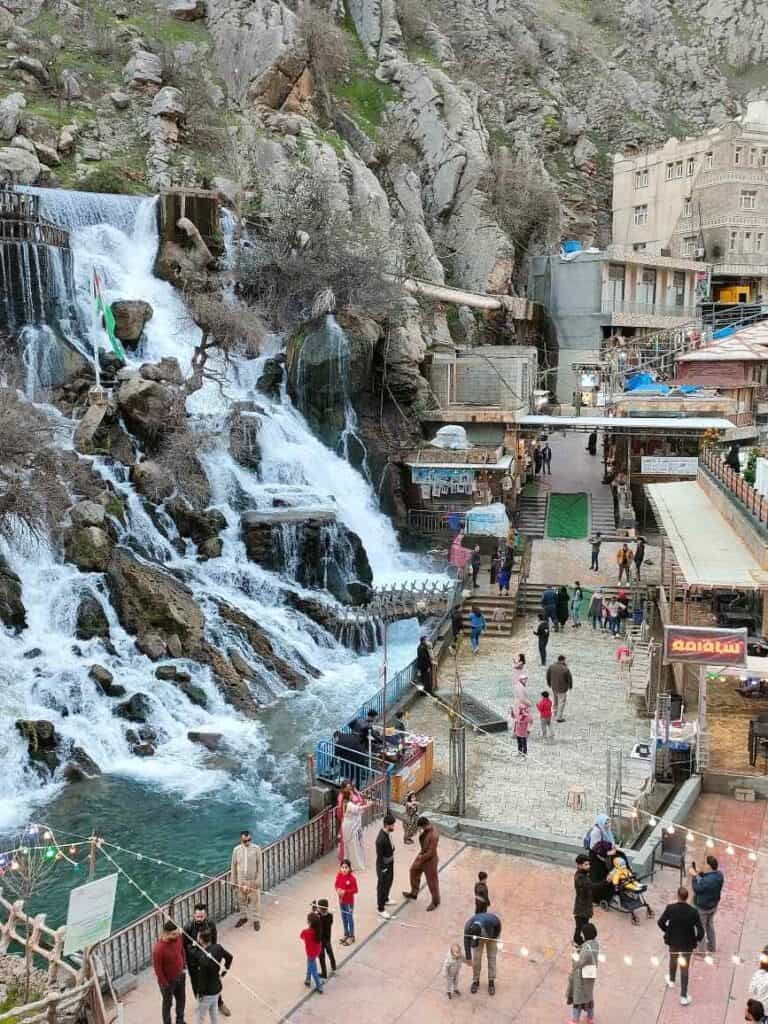
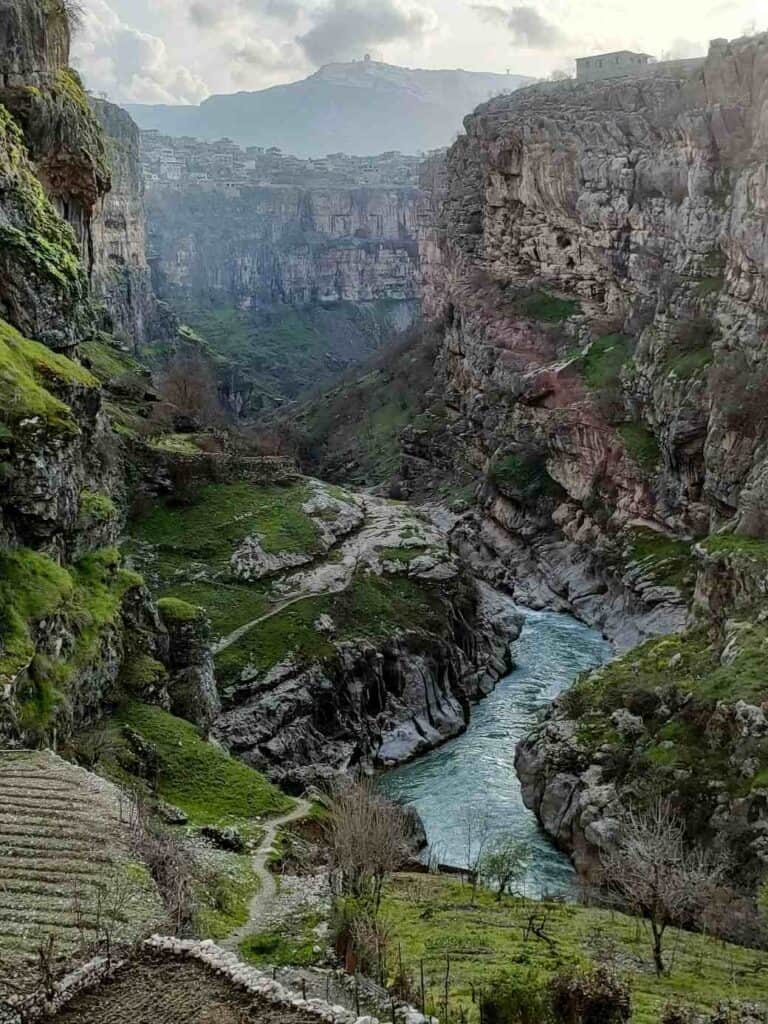
29. Hamilton Road
It is not a monument but a road you should take from northern Iraq through the mountains of Kurdistan to the Irani border. Hamilton overcame all the obstacles (disease, bureaucracy, tribal conflicts) to build this engineering masterpiece. The road completed in 1932 ran from Erbil, through Rawanduz, to the Iranian border near modern-day Piranshahr.
He wrote his experiences with construction in a book.
Road through Kurdistan: The Narrative of an Engineer in Iraq
30. Lalish – the holy place of the Yazidi people is a beautiful place in Iraq
Lalish, located in Iraqi Kurdistan, is the main pilgrimage center of the Yazidi people, with the tomb of Sheikh Adi. Many Yazidis consider Yazidism both an ethnic and religious identity. The Yezidis have strong links to the Kurds, but they consider themselves a separate ethnic group. Most speak Kurdish, but some Arabic. Yazidis were forced to give up their identity, convert to Sunni Islam and declare themselves Arabs or Kurds.
Lalish is a complex of temples and shrines. However, the temple with the tomb of Sheikh Adi, who spread the Yazidi religion in the 12th century, is the heart of Lalish.
The religious importance of Lalish
Many Yazidi pilgrims take some soil before they leave Lalish wrapped up in a small cloth folded into a triangle, which they keep in their pocket or wallet as a talisman. During important holidays, like New Year around April, the road gets crowded with Yazidis making the pilgrimage. It is the best time to go to Lalish when the season turns, and the valley is beautiful.
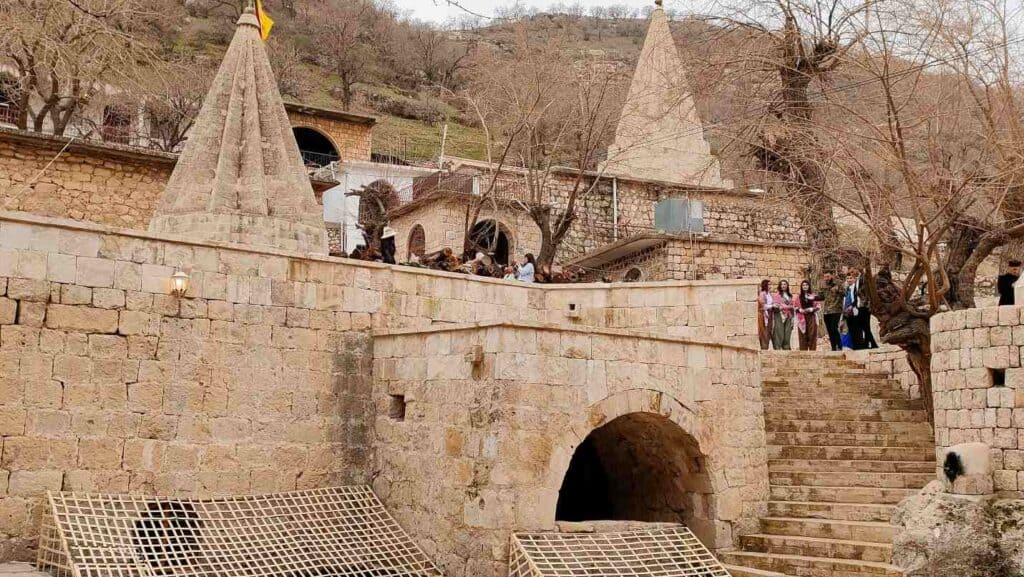
How to visit Lalish?
Lalish is a sacred place where visitors need to remove their shoes. Not at the entrance but already in the parking lot. You are allowed to walk in socks, but many Yazidis walk barefoot. Before entering, they kiss the door frames of temples and strictly avoid stepping on the entranceway. Do not forget that when you are in Lalish. The Yazidis kiss the entranceway and tie colorful silk into knots inside, each knot representing a wish and a prayer.
Saddam persecuted Yazidis as a Kurdish minority to complete his Arabization program, forcing them to leave their villages.
Yazidis were the most persecuted minority by ISIS, more than Christians or Shias.
Many Yazidis found refuge in Lalish, the holy city, fleeing ISIS. The Caliphate justified the genocide against Yazidis, saying that since the Yazidi community does not have a holy book and is considered non-believers, they can be systematically raped, traded as slaves, and killed without punishment. Although they enjoy more freedom in the Kurdistan Regional Government (KRG), sectarian violence and persecution still exist.
Read more about Yazidism and visiting Lalish
31. Amedi (Amadiya)
Amadiya, a small town overlooking the Sapna river, is perched on top of the rocks. Its location makes it one of the most beautiful places in Iraqi Kurdistan. Amedi’s main attraction is the Bahdinan arched stone gate which was once the only entryway into the fortified town.
You find some road graffiti between Ahmediya and Duhok along the road depicting the Peshmerga soldiers.
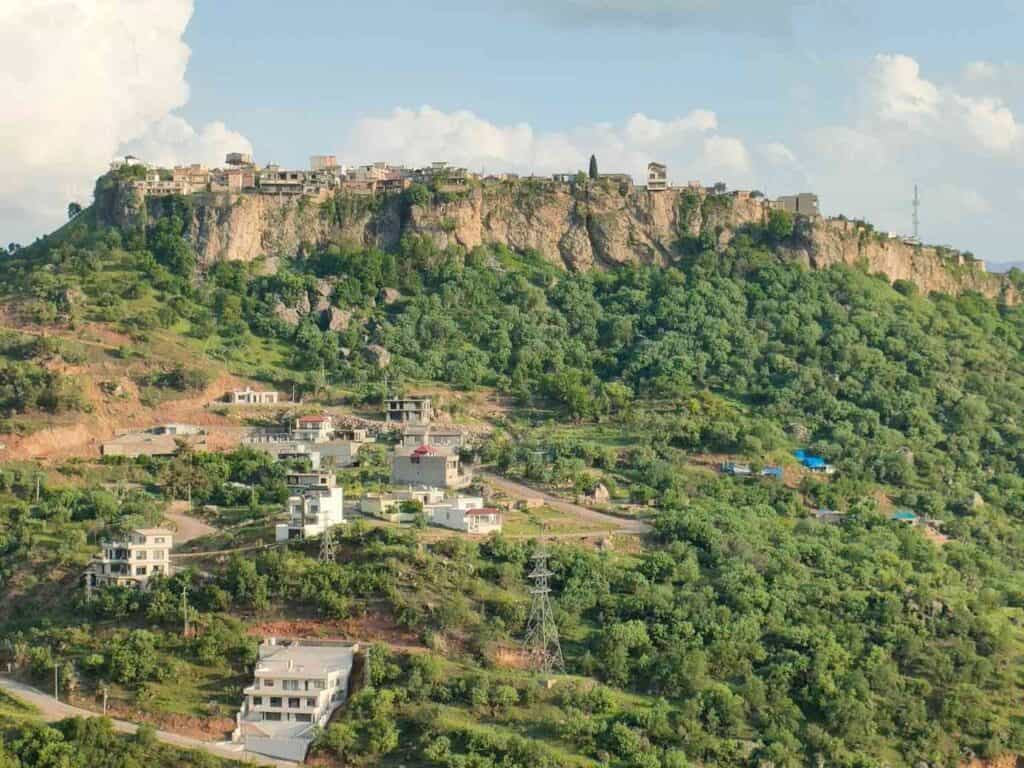
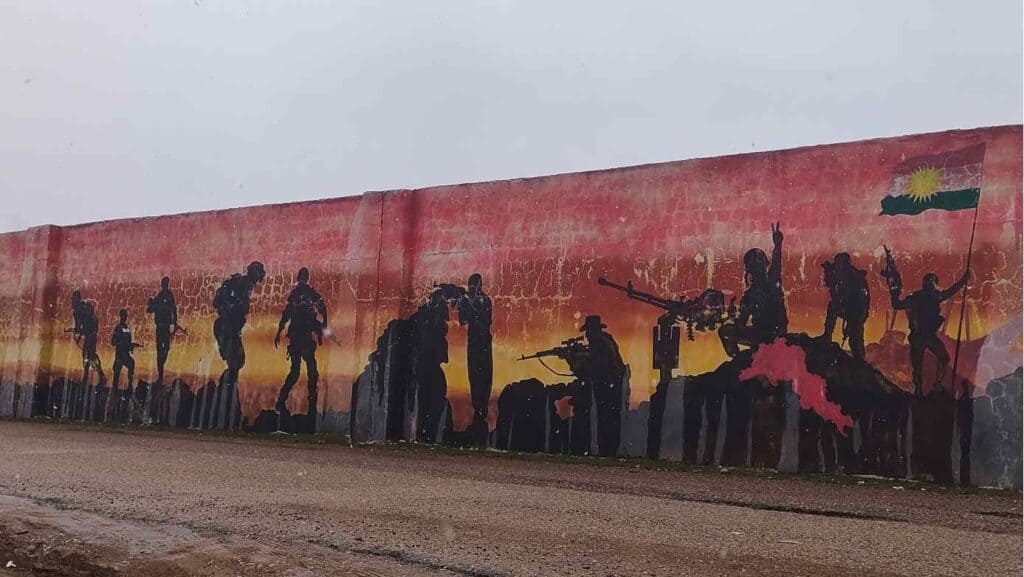
32. Dore canyon (Barzan)
Dore canyon, with its horseshoe shape riverbend, is a perfect example of the beautiful natural landscape of Iraqi Kurdistan.
How to get there?
There is no public transportation to Dore canyon. The only way to get there is by car. The Canyon is approximately 140 km from Erbil, which takes over 2 hours’ drive.
Dore canyon is one of the most beautiful Iraqi Kurdistan destinations that local families often choose as a picnic spot on weekends (Friday or Saturday).
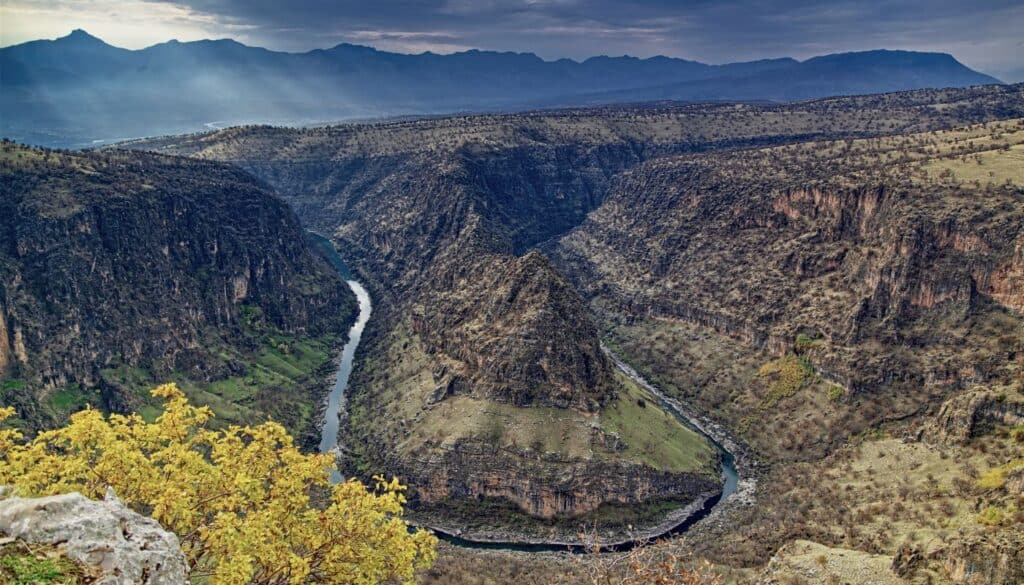
33. Deralok Dam
Iraqi Kurdistan is mainly famous for its fantastic landscape. The Deralok Dam, the first hydropower project of the Kurdistan Regional Government, started to be built over the Great Zab river in 2015. It lies between Barzan and Amedi but closer to the latter one. At the same time, it is a popular place for local families to hang out end enjoy the scenery walking along the river.
Entrance fee: 2000 IQD for men’s and family part
34. Duhok and Duhok dam
The picturesque city, surrounded by mountains in a valley, is the borderland with Turkey and an agricultural area rich in fruit and vegetables. Locals tell you that Saddam had the original trees flattened. It suffered under Saddam’s Arabization and the Anfal campaign, but the city has been booming as people returned. It has received massive investment, and the new airport is under construction. Apart from Iraqi Kurds, the majority ethnic group, Assyrians, Yezidis, and Arabs, also live there, many of who fled persecution during the Islamic State’s expansion.
Duhok is now surprisingly modern and developed, although apart from the St. Ith Llaha Church and the bazaar, it does not have remarkable tourist attractions. However, it is a good place to make day trips to Ahmedi or Akre.
The Halamata Cave is only some kilometers from Duhok and contains precious Assyrian carvings (the Maltai Reliefs) depicting the procession of figures first photographed by Gertrude Bell, a British archeologist, traveler, and political officer. They are said to date back to the 8th – 7th century BC.
Once you are in Duhok, visit the Duhok dam, a stunning artificial lake only a few kilometers from the city.
How to get there?
You can easily get to Duhok from Mosul or Erbil with shared taxis.
Where to sleep in Duhok?
35. Akre during Nowruz
Akre, the Kurdish town, is most famous for its Nowruz celebration when locals and visitors envelop the valley by lighting torches in March. I planned my whole Iraqi visit around that to arrive by Nowruz in Akre, and unfortunately, I missed that. I was with locals as so often, and the policemen at the security check did not let us through for some ununderstandable reasons arriving from Mosul. This shows how unpredictable the checkpoints are between Federal Iraq and Iraqi Kurdistan. The same problem could not have occurred if we had come from Erbil to Akre.
As you can see, there are plenty of beautiful places to visit in Iraq, but I also mentioned those that are interesting and help us get a deeper understanding. Although Iraqi Kurdistan has been on the bucket list of travelers for a while, tourism in Federal Iraq is relatively new. There are still many uncertainties regarding how to visit the touristic attractions in Iraq. I hope this guide helps with some tips on the best Iraq travel itineraries to help you plan your trip to this underrated Middle Eastern country. Do not hesitate to leave a comment if you have any questions.
Pin it for later!
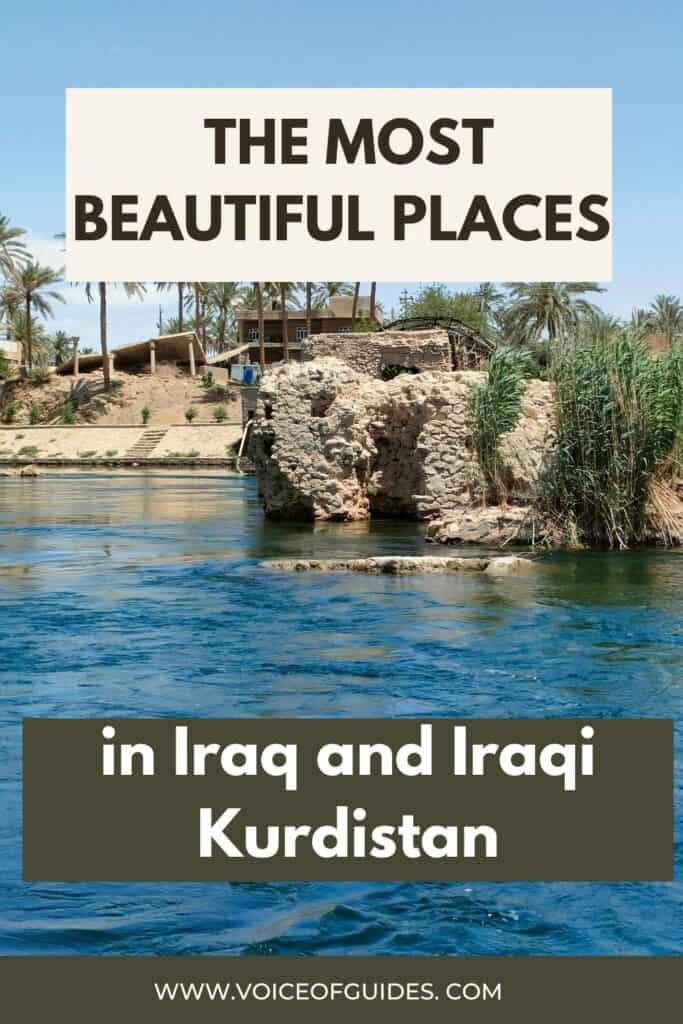
Other articles about Iraq
All you need to know before traveling to Iraq
What to visit in Baghdad in 3-4 days
The best books to read about Iraq (constantly updated)
Visiting Lalish, the holy place of Yezidi people
How to visit Babylon and other places around Hillah
More articles about the Middle East
Lebanon
10-day itinerary to visit Lebanon
How to spend 2-3 days in Beirut
Travel guide to Tripoli, Lebanon
Best books to read about Lebanon
Traveling around Lebanon during the economic crisis
Iran
What you can and cannot do in Iran
45 things you must know before traveling to Iran
The best books to read about Iran
The best 2-week itinerary in Iran (the classical route)
All you need to know about the Iranian currency
The best places to visit in Tehran (museums, palaces, religious sites)
The best things to do in Tehran
Travel guide to Tabriz, North Iran
Travel guide to Mashhad, the holy city of Iran
Best things to do in Lahijan, the city of tea in Iran
Best things to do in Ramsar at the Caspian Sea
Visit Varzaneh desert, Toudeshk, Mesr desert and Garmeh from Isfahan
Jordan
The perfect Petra one and two-day itinerary in Petra
Visiting Jerash, Ajloun and Umm Qais
Jordan desert castles: a day trip from Amman
5, 7 and 10 day Jordan travel itineraries
Other articles about Iraq

